Sunlit or softly glowing, classroom lighting shapes everything from student alertness to energy bills. Research tracking over 750 pupils links generous daylight and flexible light controls to learning gains of up to 25 percent, while tunable LEDs and smart sensors slash electricity by as much as 50 percent. Below are 25 actionable lighting ideas — each about 100 words — to help teachers blend science, safety, and creativity into a brighter, calmer room.
1. Natural Daylight Classroom Lighting for Brighter Minds
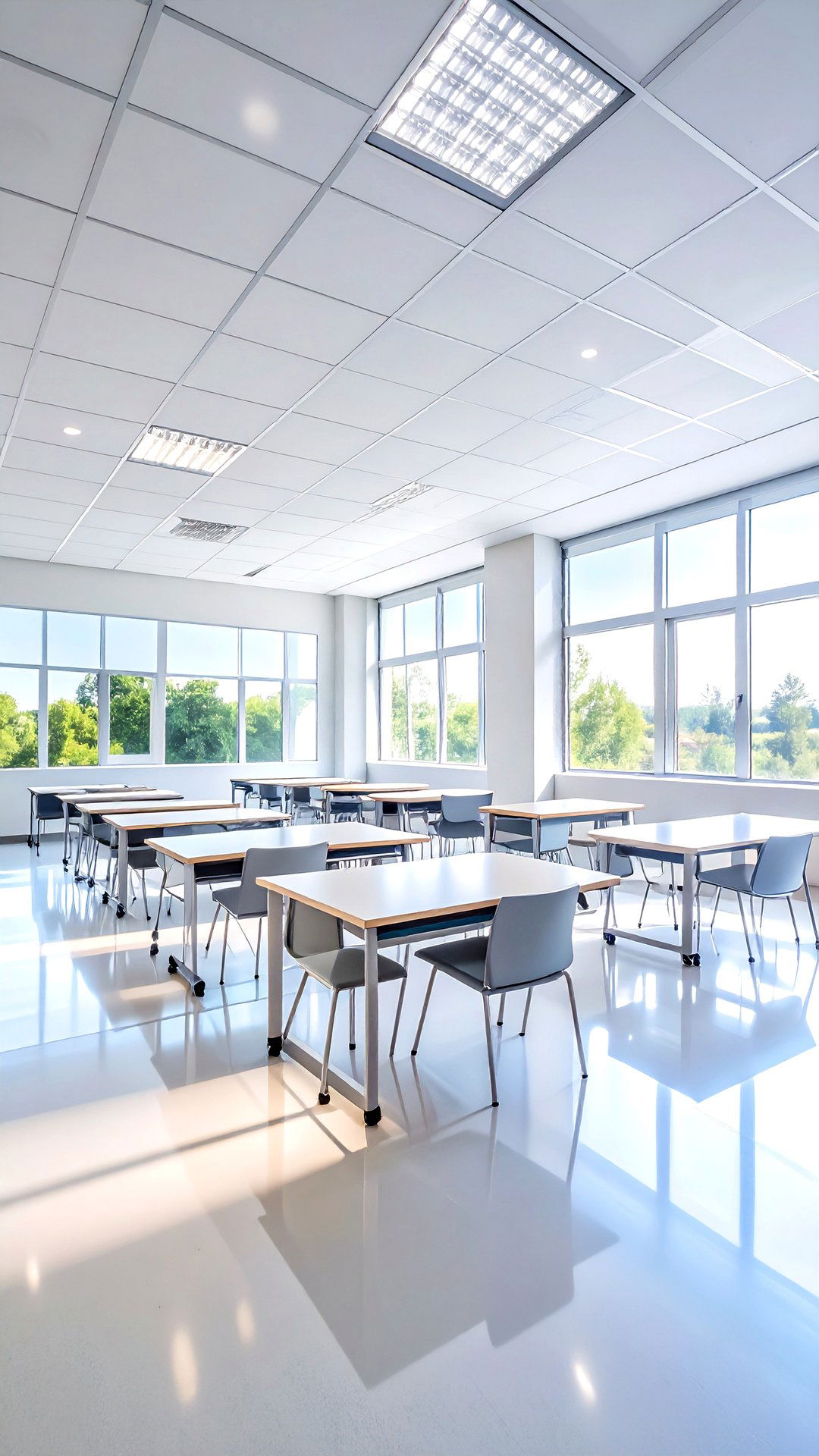
A generous wash of sunlight remains the gold standard for classroom lighting because it entrains circadian rhythms and fuels cognition. Open blinds fully during morning hours, keep tall furniture away from windows, and use light-colored walls or whiteboards as reflectors to bounce daylight deeper into the room. Studies from University College London and the Heschong Mahone Group show students in day-lit classrooms progress up to 26 percent faster in reading and 20 percent faster in math. Add glare-free roller shades so teachers can tame brightness without plunging learners into artificial gloom.
2. Tunable White Classroom Lighting to Support Circadian Rhythms
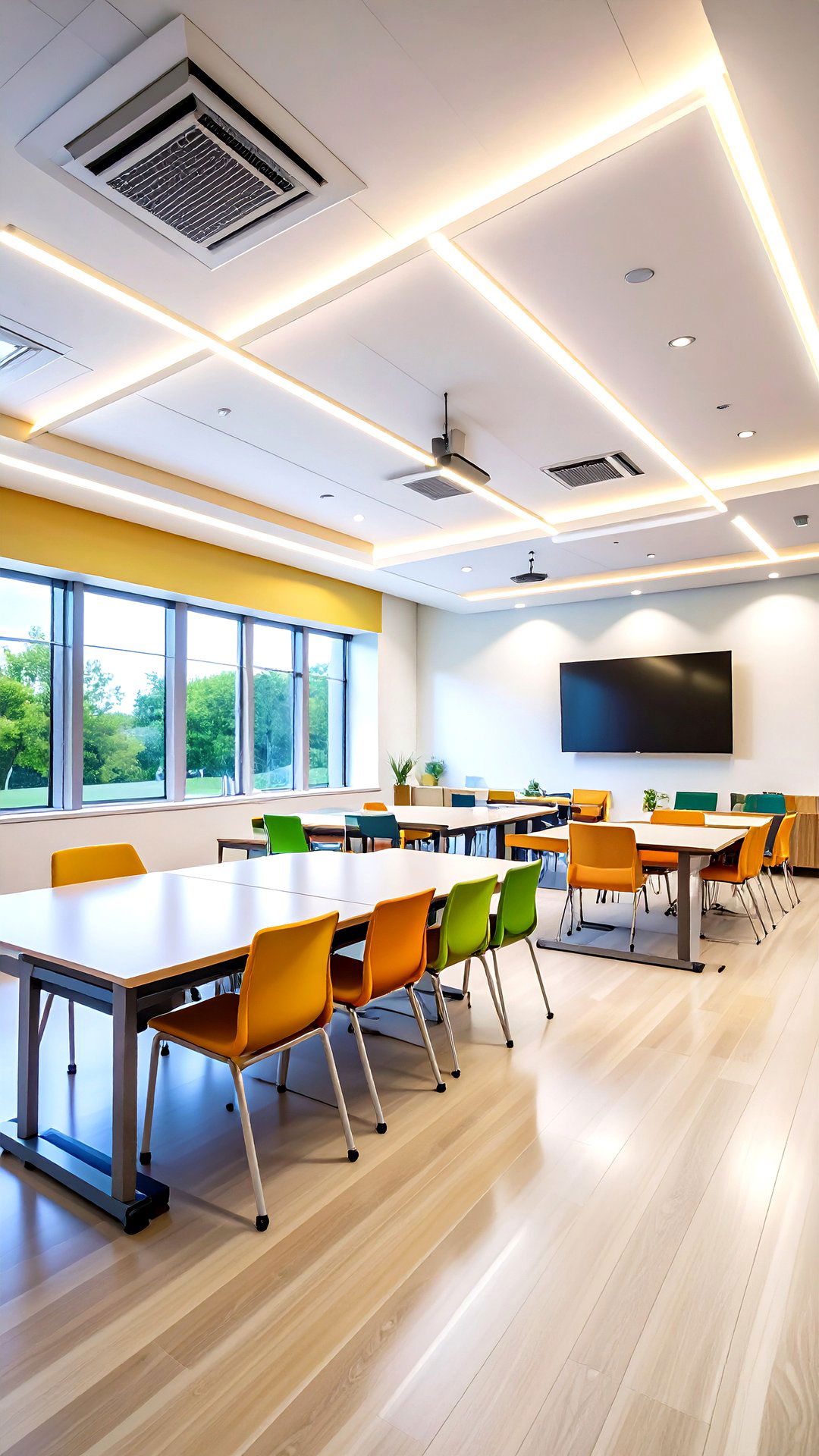
Unlike fixed fluorescent tubes, tunable-white LEDs let educators dial color temperature from a warm, calming 2700 K during storytelling to a crisp 5000 K for exams. Teachers in Department of Energy pilots reported smoother transitions between activities and calmer classes. Pair the fixtures with easy wall presets — “Focus, ” “Calm, ” “Collaborate” — so switching scenes feels as natural as changing slides. By echoing the sun’s daily spectral shift, tunable classroom lighting helps regulate melatonin, keeping pupils alert in mid-morning yet ready to wind down by last period.
3. Dimmable Smart Classroom Lighting Controls for Versatility

The ability to dim lights in precise zones — front, center, or breakout corners — turns one static room into several micro-environments. Installing smart switches or wireless control apps lets teachers lower brightness for projector work or crank it up for art critiques. Litetronics reports that schools adopting app-based controls cut energy use by 30 percent while gaining teaching flexibility. Add manual override buttons so substitutes or visiting presenters aren’t locked out of the system, and schedule automatic shut-off after the last bell to capture after-hours savings.
4. Task-Focused Classroom Lighting at Reading Nooks
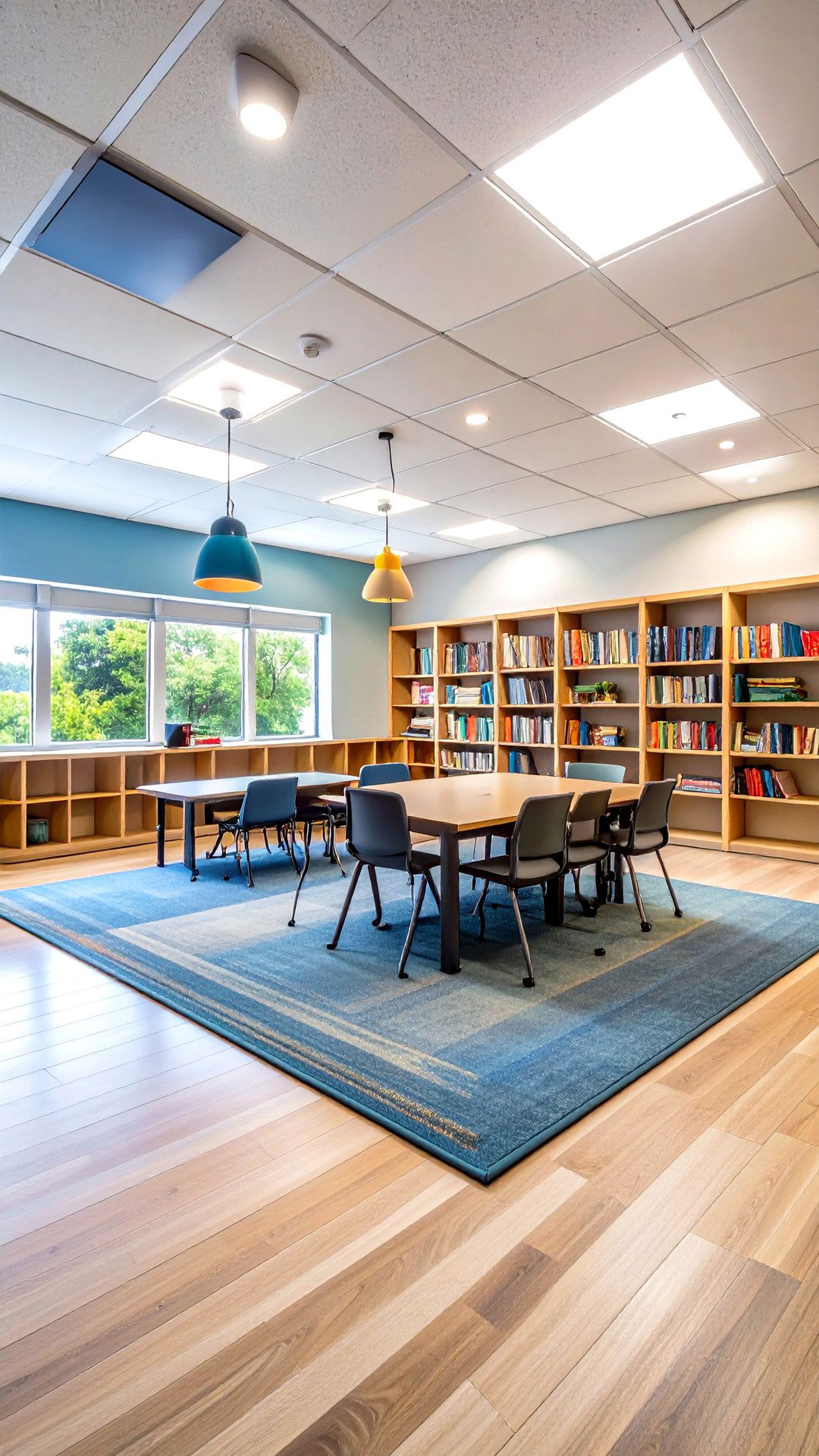
Focused beams matter as much as ambient wash. Clip-on LED reading lamps or small floor uplights positioned slightly behind a student prevent page shadows and eye strain, The Spruce notes. Choose fixtures with 90-plus CRI so letters appear crisp and accurate color work isn’t skewed. Wayfair’s multipurpose torchiere-plus-reading-arm floor lamp is a budget favorite because one base covers both ambient and task needs. Make sure cords are taped along baseboards or routed through grommets to avoid trip hazards in busy reading corners.
5. Flexible-Zone Classroom Lighting to Match Activities
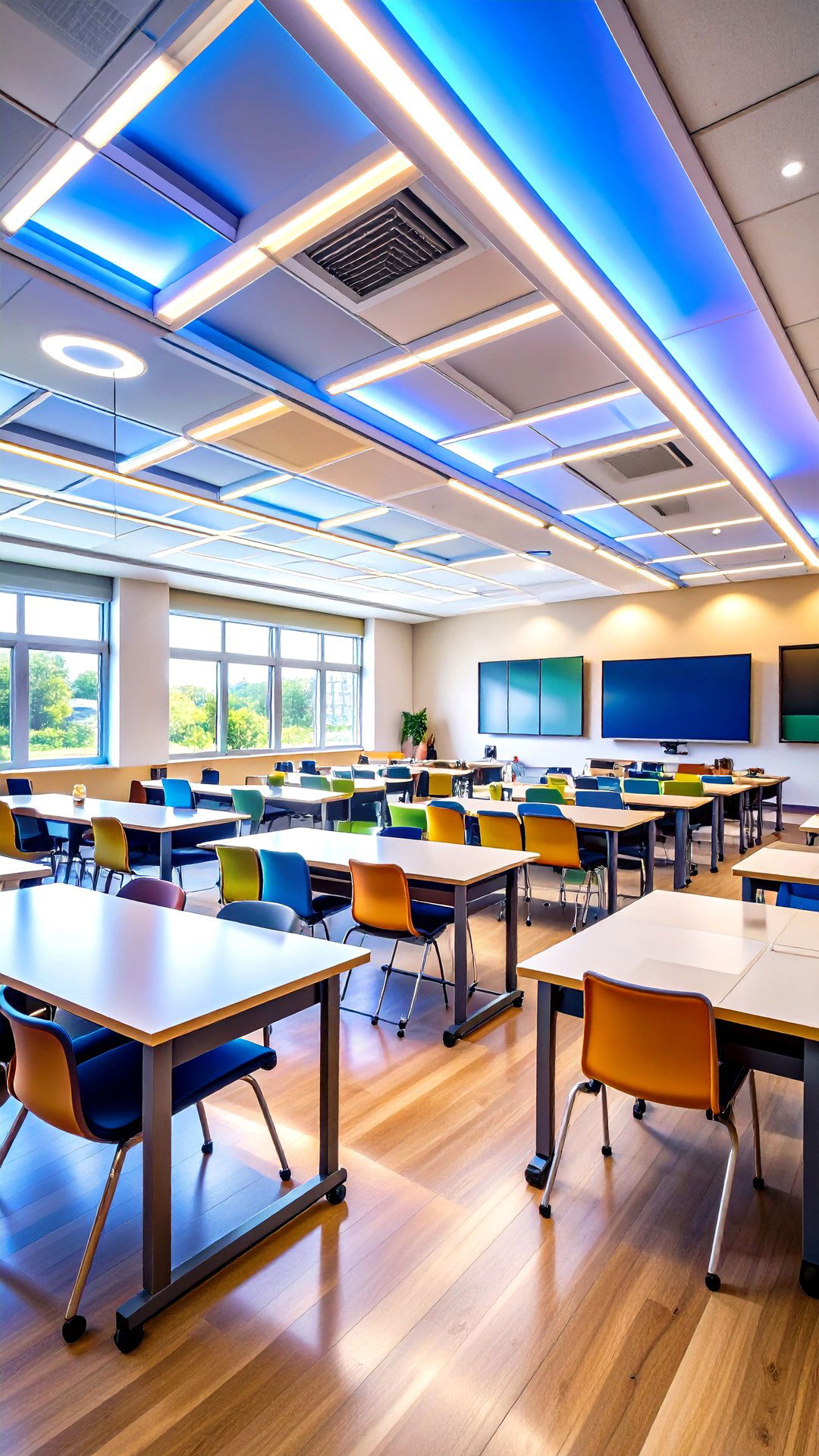
Adjustable rows or pods of LED panels let teachers spotlight only the groups currently collaborating, leaving other sections in a softer glow that encourages quiet research. RevolveLED highlights layouts where every third panel is on a separate circuit, delivering targeted brightness without rewiring entire ceilings. Combine this zoning with movable desks so kids naturally drift to the light level that matches their task — bright for STEM labs, dim for mindfulness minutes — turning classroom lighting itself into a silent behavior cue.
6. Indirect Uplighting Classroom Lighting to Reduce Glare

Bouncing light off the ceiling spreads illumination evenly and minimizes hot spots on glossy tablets. Slim LED uplight bars mounted atop cabinets or window headers send a soft, shadow-free wash across the room, a method interior designers rank among the best fixes for migraine-prone learners. Pair uplights with matte white acoustic tiles so the ceiling becomes a giant reflector, improving vertical illumination for wall charts while cutting the contrast that tires young eyes.
7. Color-Changing Accent Classroom Lighting for Engagement
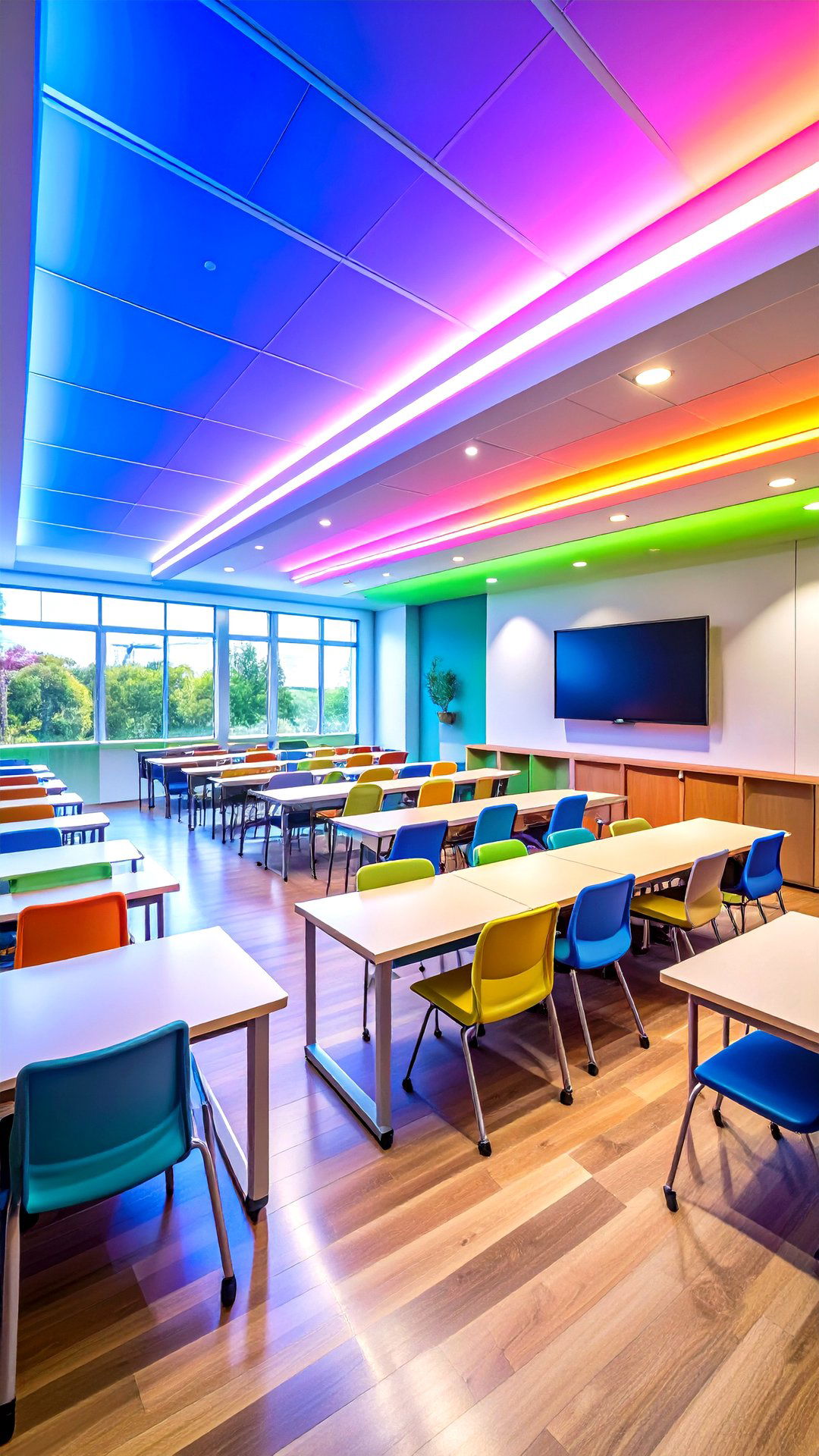
Strategic splashes of soft RGB light can transform routine lessons into immersive experiences — amber for historical reenactments, aquatic blue for ocean science, gentle lavender for yoga breaks. Tunable systems limit saturated hues to perimeter coves so accent shades never overpower functional lighting. A simple DMX controller or app preset makes scene changes instantaneous, helping teachers reinforce learning through multisensory cues while students associate each color with a particular classroom routine.
8. Fluorescent Filter Classroom Lighting for Comfort
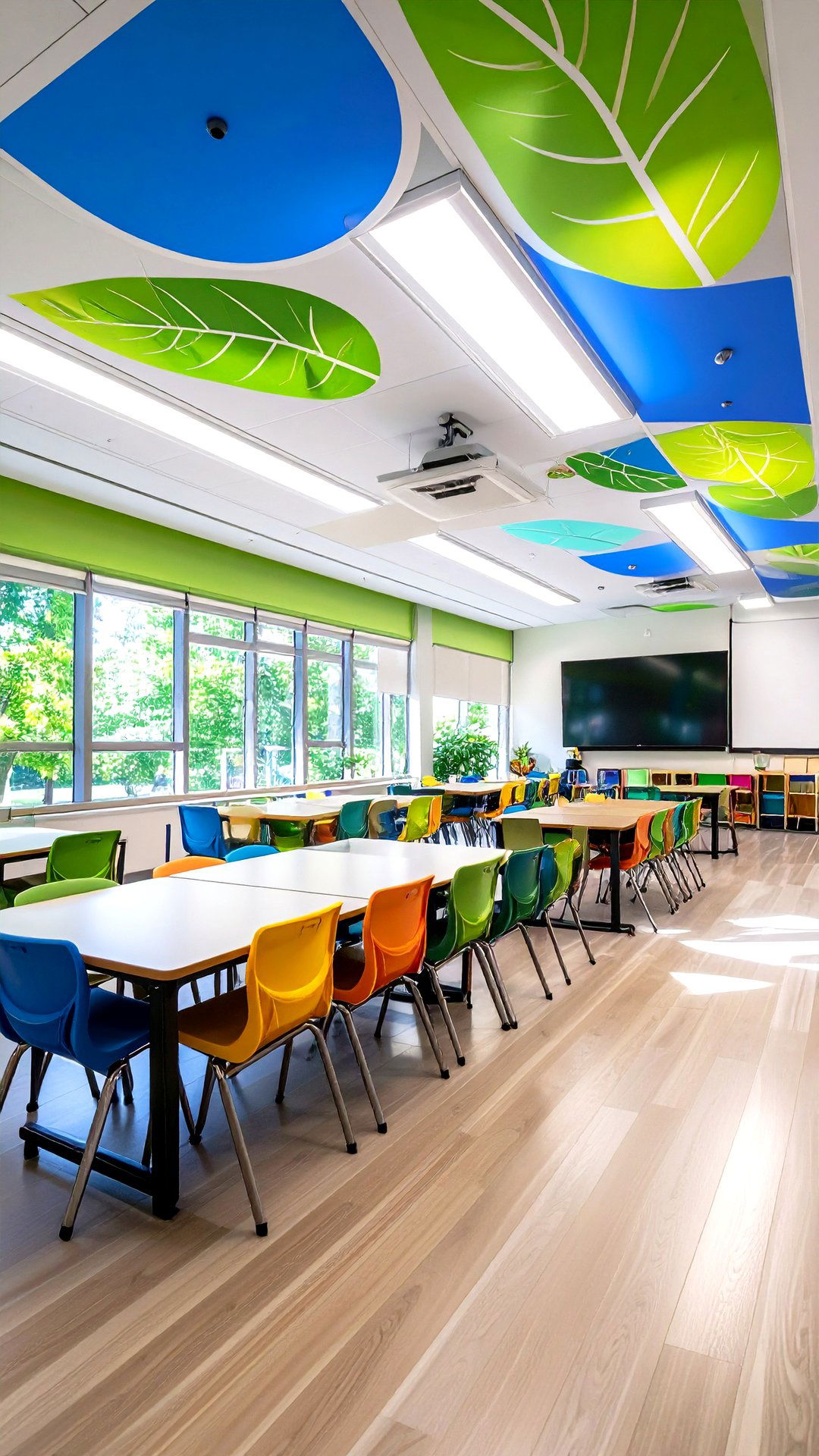
Snapping magnetic film filters over legacy fluorescent troffers instantly softens harsh blue peaks without a full retrofit. WeAreTeachers notes that UL-listed diffusers reduce headaches and hyperactivity while costing only a few dollars per fixture. Opt for flame-retardant versions that pass local fire codes and use soothing sky or leaf patterns to introduce gentle biophilic visuals. Classroom lighting comfort rises, and replacement tubes last longer because filters also block dust.
9. LED Strip Classroom Lighting for Display Boards
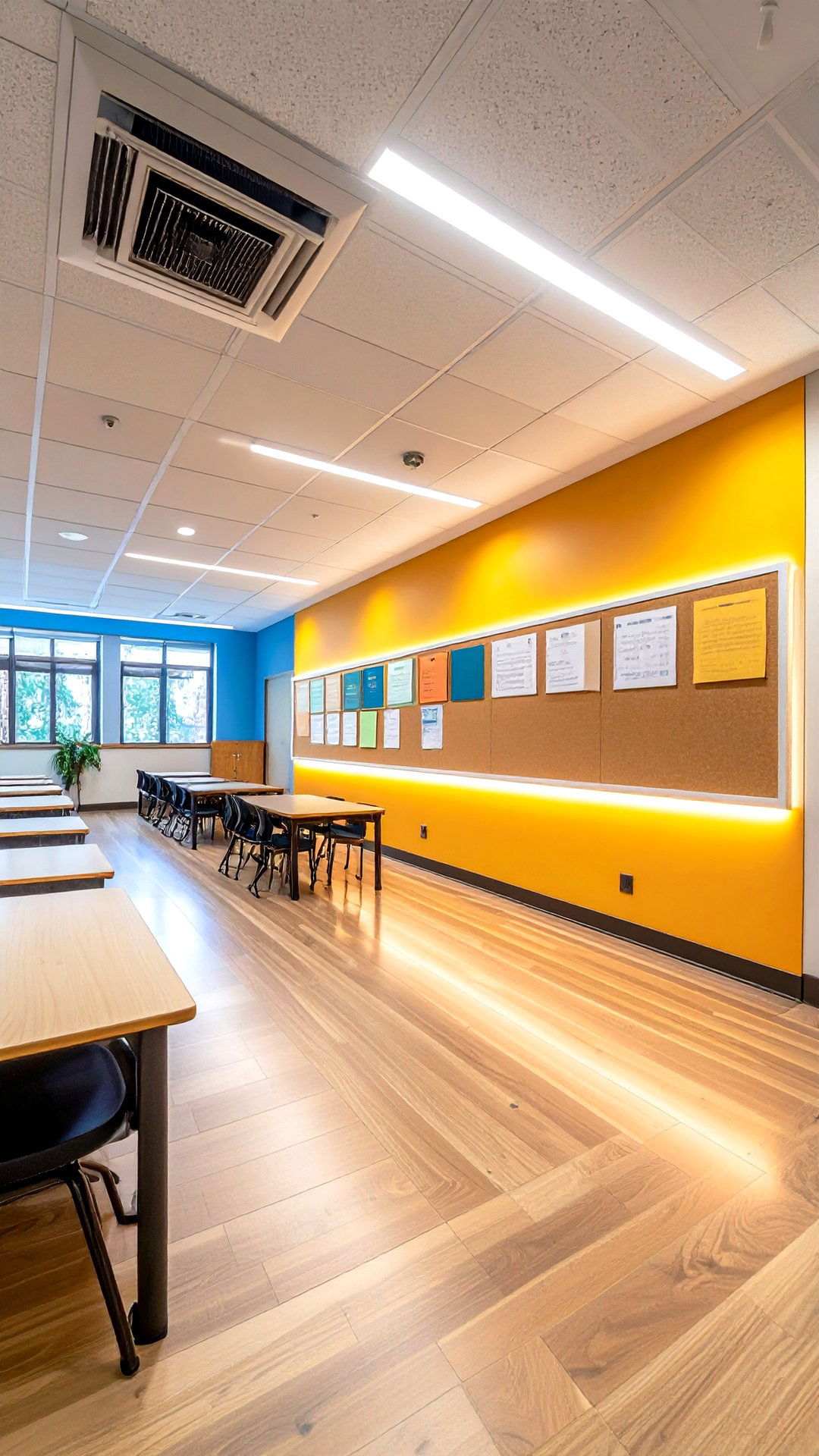
Slim adhesive LED strips mounted along corkboard edges draw eyes to student work and eliminate the need for bright ceiling light when only the display wall is in use. RevolveLED recommends 24-volt strips with diffused lenses to avoid pixel dots on glossy posters. Add a low-profile motion sensor so the strip activates as students approach, merging showcase flair with energy discipline. Because strips sip less than 5 watts per meter, they fit within most districts’ sustainability goals.
10. Cozy String-Light Classroom Lighting—Safety First
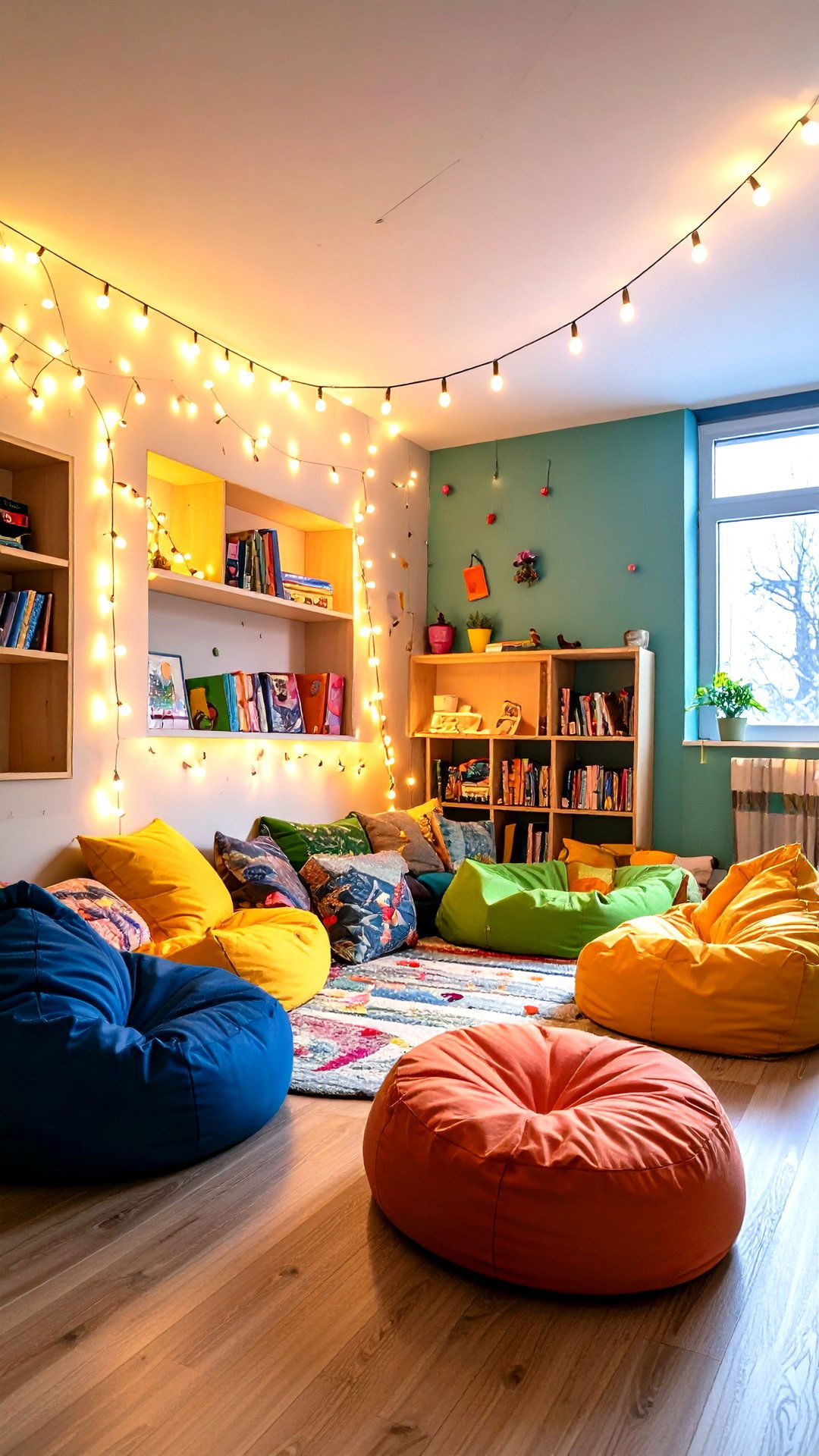
Nothing beats warm fairy lights for a cozy book corner, but safety must come first. Fire-safety guides allow LED string lights rated UL 588 for up to 90 days’ temporary classroom use, provided cords are intact and not run through doorways. Hang strands with insulated hooks away from sprinklers and never overload outlets; some districts ban incandescent minis after inspectors linked them to ceiling-tile scorch marks. Check each semester that bulbs remain cool to the touch — a quick tactile test every teacher can schedule.
11. Floor-Lamp Classroom Lighting for Calm Corners
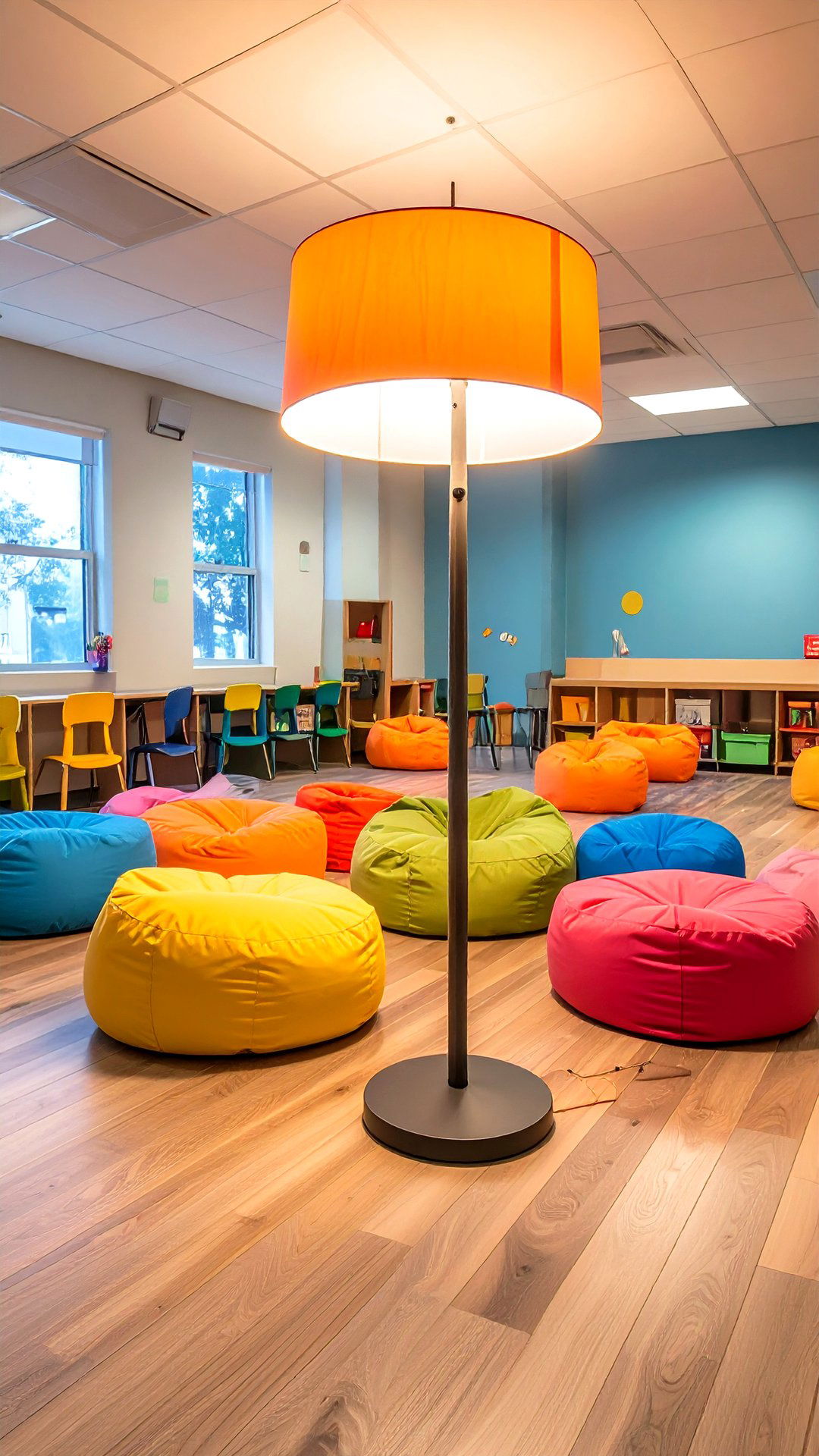
A softly up-lighting floor lamp placed beside beanbags signals “quiet zone” for students needing sensory breaks. Integrated torchiere-plus-reading-arm models deliver both broad ambient and narrow task beams from one plug, freeing outlet space in older classrooms. Choose a weighted base and tamper-proof bulb cover to keep rambunctious learners safe, and use a 3000 K LED filament to mimic evening warmth, encouraging self-regulation without drowsiness.
12. Backlit Whiteboard Classroom Lighting to Ease Contrast
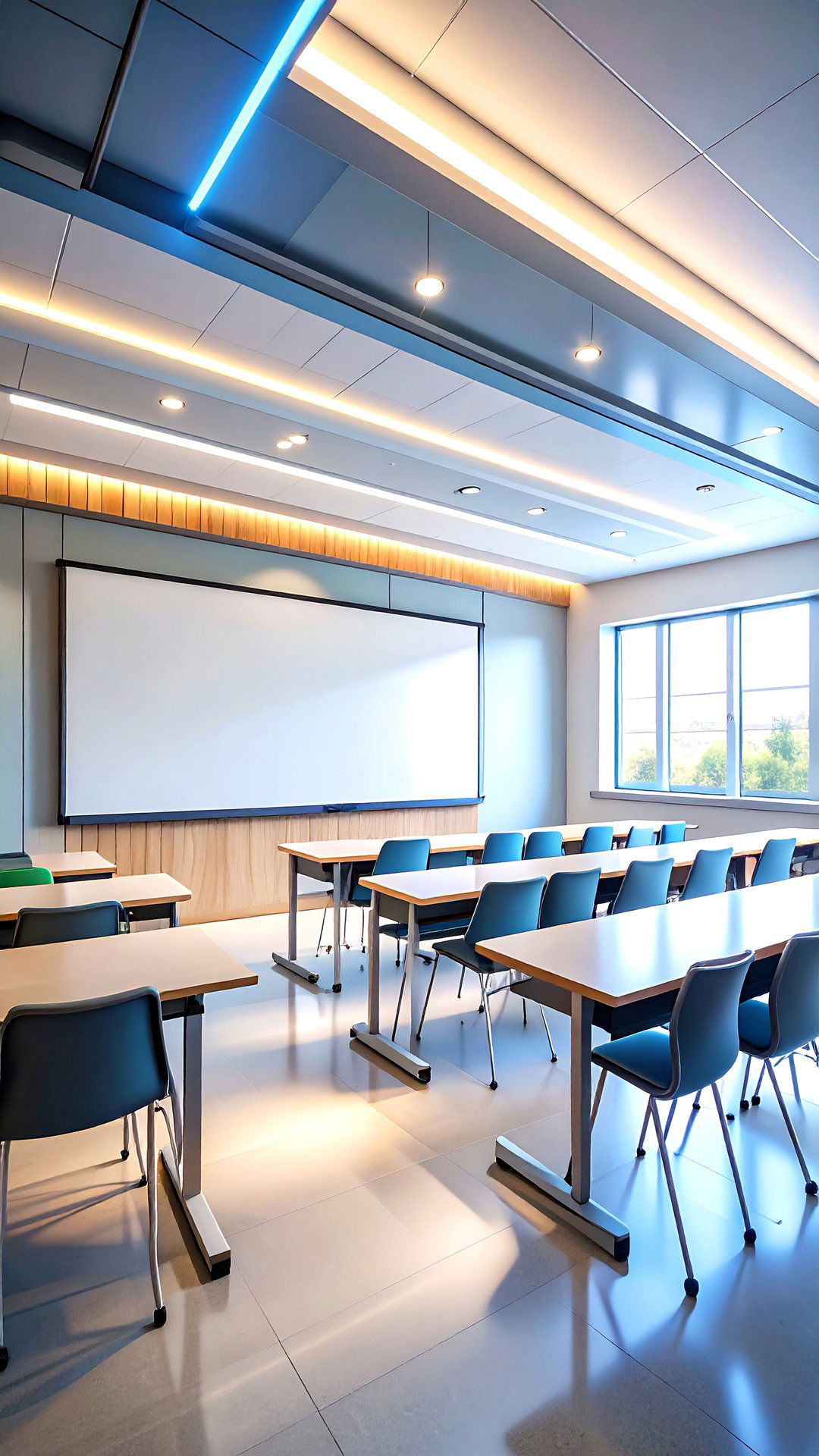
By installing a slim LED bar above or behind interactive whiteboards, teachers eliminate the harsh jump from bright screen to dim room that tires eyes. RevolveLED’s classroom case studies show that a 400 – 500 lux halo improves legibility and reduces blue glare. Wire the bar to a separate dimmer so instructors can fine-tune brightness as daylight changes. The result is classroom lighting that keeps focus on content, not on squinting to read.
13. Occupancy-Sensor Classroom Lighting for Energy Savings
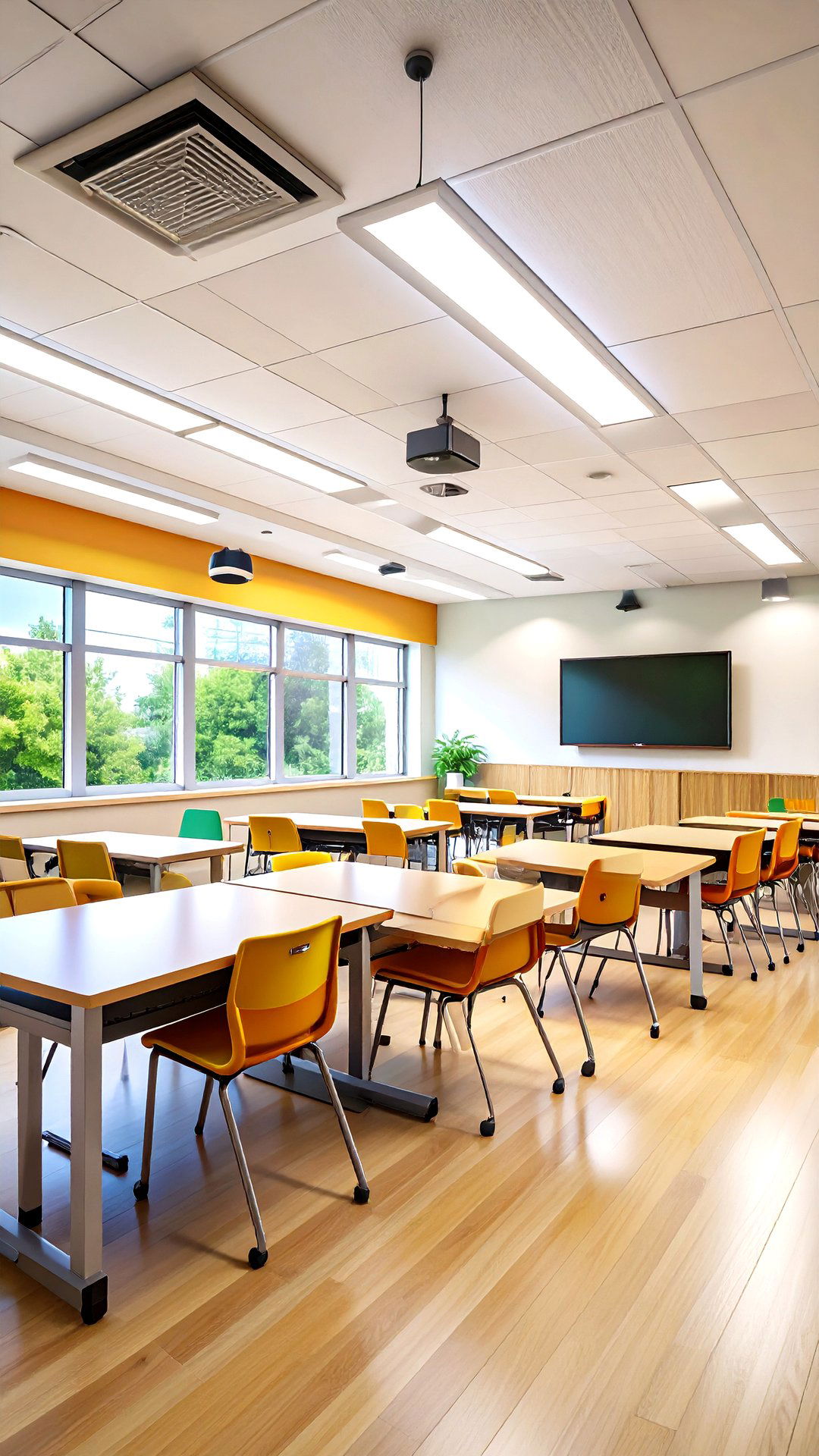
Wireless passive-infrared or ultrasonic sensors turn off lights when the last student exits, delivering documented energy cuts between 10 percent and 90 percent. Mount sensors at door height to see both tall teens and crouching kindergartners, and select models with daylight-hold-off so fixtures stay off if ample sun is already streaming in. A Florida Solar Energy Center study showed paybacks under two years in classrooms with varied schedules.
14. Reflective-Surface Classroom Lighting to Amplify Light
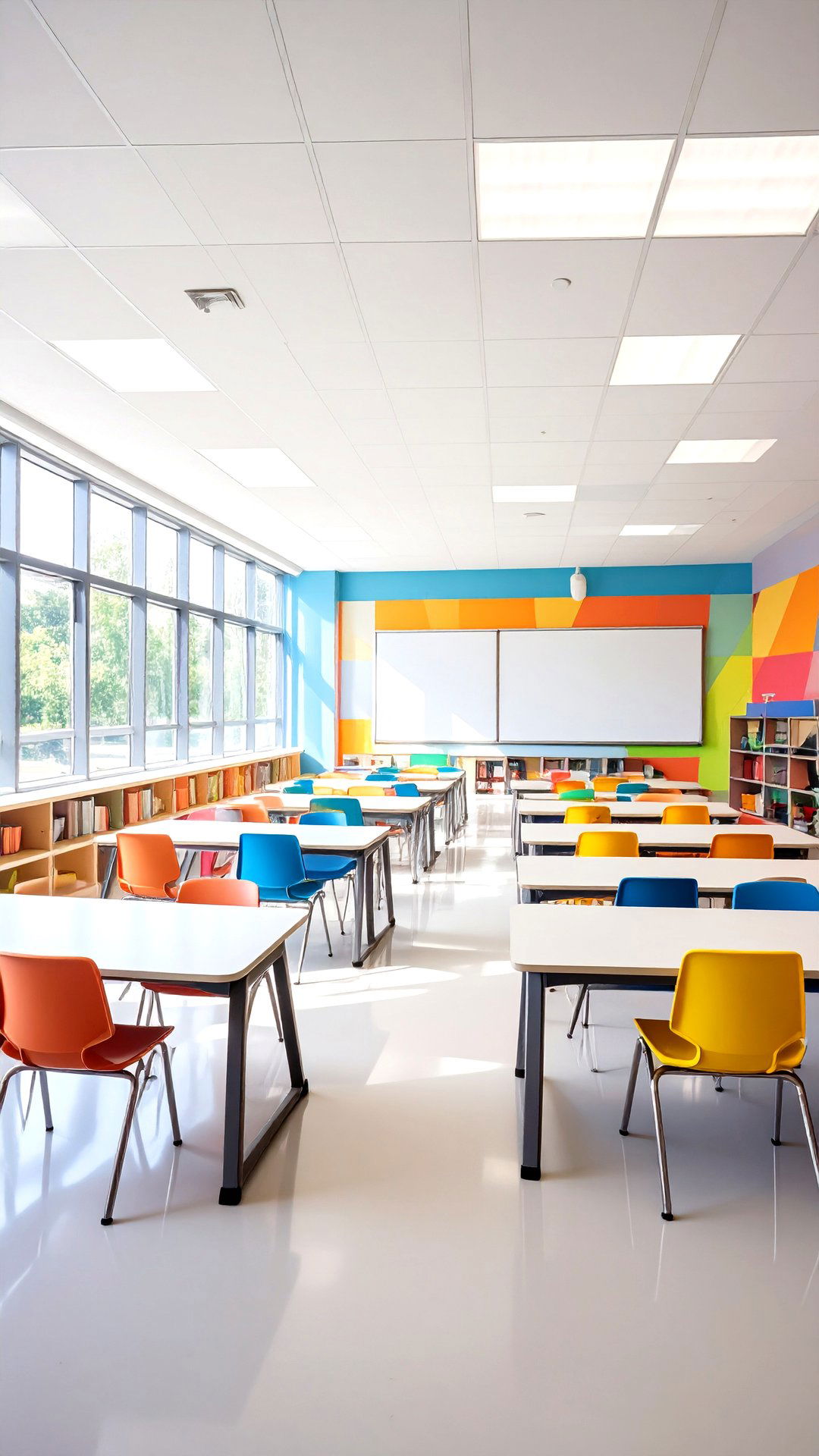
Glossy whiteboards, pale desktops, and satin paint bounce lumens where they’re most useful, allowing schools to dim overhead fixtures by 20 percent without losing visibility. Daylighting researchers at UCL found that surfaces with 70-plus light reflectance values magnify daylight’s learning benefits. Encourage students to keep desktops clutter-free so light can rebound; even colorful posters work if printed on matte stock that scatters glare rather than creating mirror hotspots.
15. Student-Made Lantern Classroom Lighting Projects
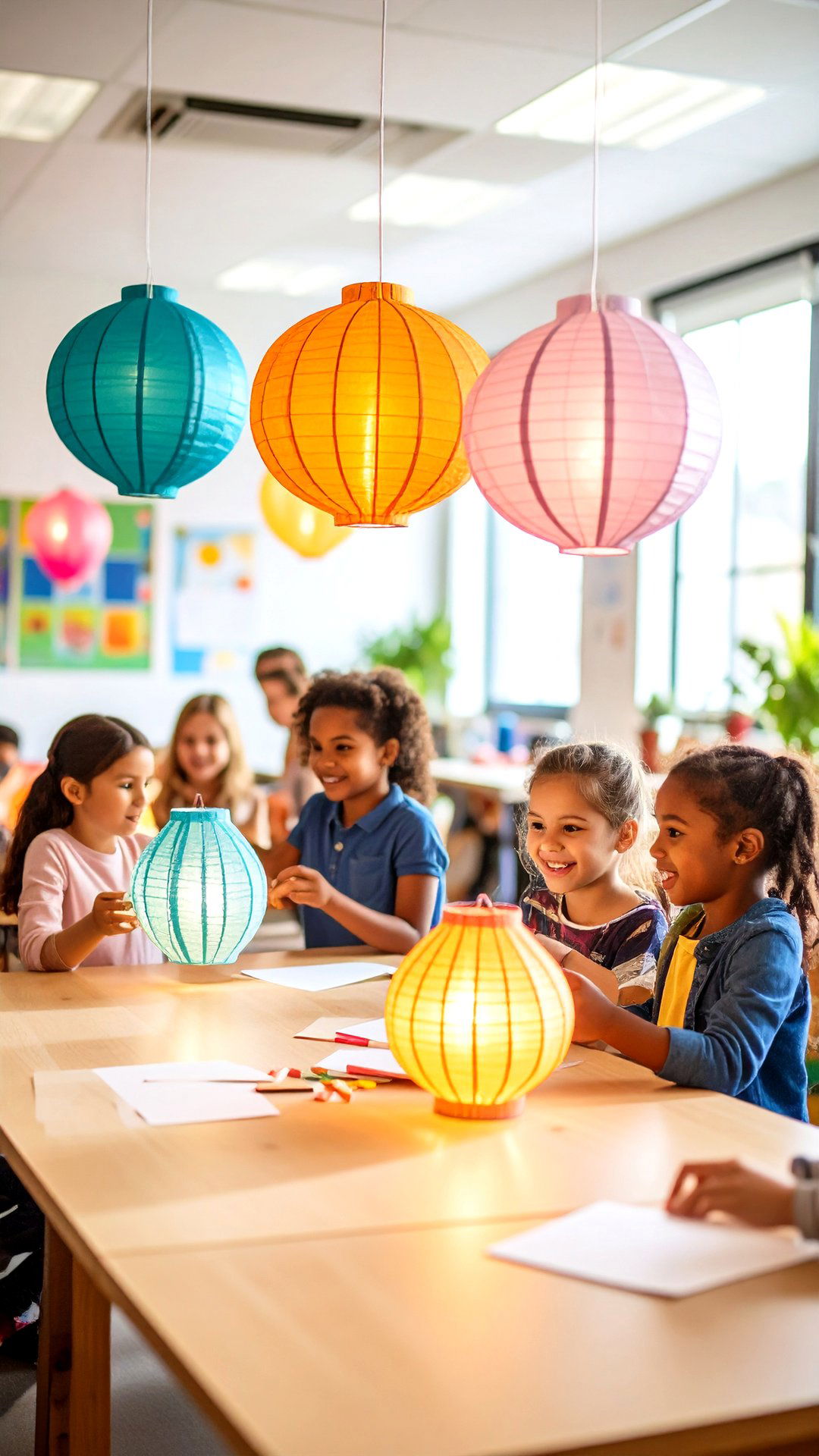
Inviting learners to craft paper-shade LED lanterns integrates STEM with décor. Use battery-powered tea lights rated for classroom safety, and explore circuits, diffusion, and color mixing in the process. The practical payoff is a set of portable glow points that calm noisy transitions. Teacher blogs highlighted by WeAreTeachers show quieter post-recess settle-downs when kids turn on their own creations. Build lantern bases from recycled yogurt cups to keep costs low and sustainability front-and-center.
16. Clip-On Classroom Lighting for Mobile Groups

Small gooseneck clamp lights powered by USB power-banks give project teams instant task illumination wherever they gather — under a lofted platform or behind a room divider. The Spruce advises placing lamps behind and slightly above the work plane to banish hand shadows. Label cords with colored tape that matches table groups so gear is returned promptly, and keep a basket of spare clips by the charging station to nurture student responsibility for classroom lighting tools.
17. Sheer-Curtain Daylight Classroom Lighting Softening
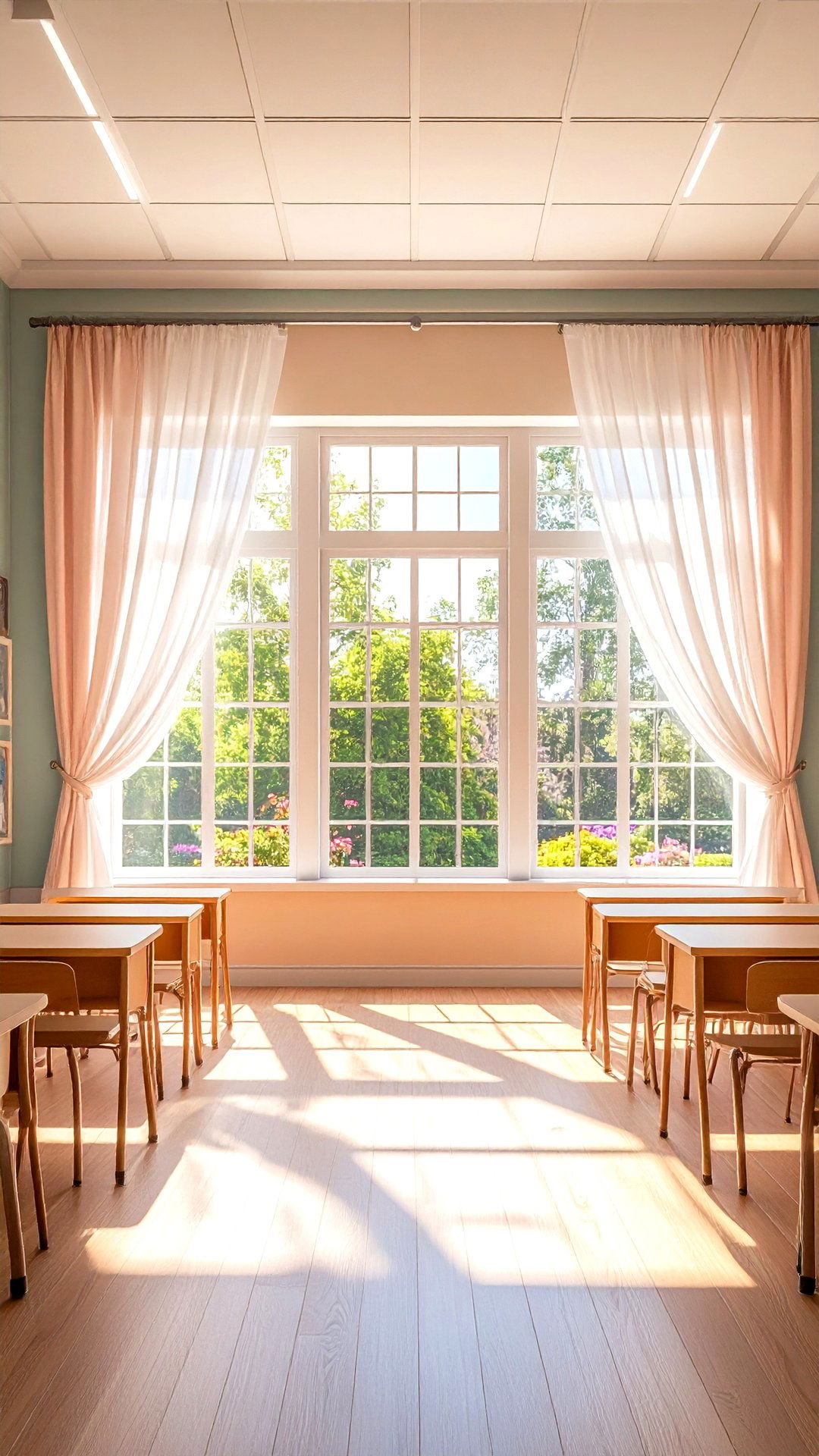
Thin white or pastel sheers spread daylight evenly across walls, eliminating high-contrast streaks that wash out screens. Designers at PBK architects recommend translucent fabrics with 50 – 60 percent openness to balance glare control and vitamin-D-rich sun. Install double tracks so heavy blackout curtains can slide over for movie days, giving teachers instant mastery of every lumen without sacrificing aesthetics.
18. Skylight or Light-Tube Classroom Lighting
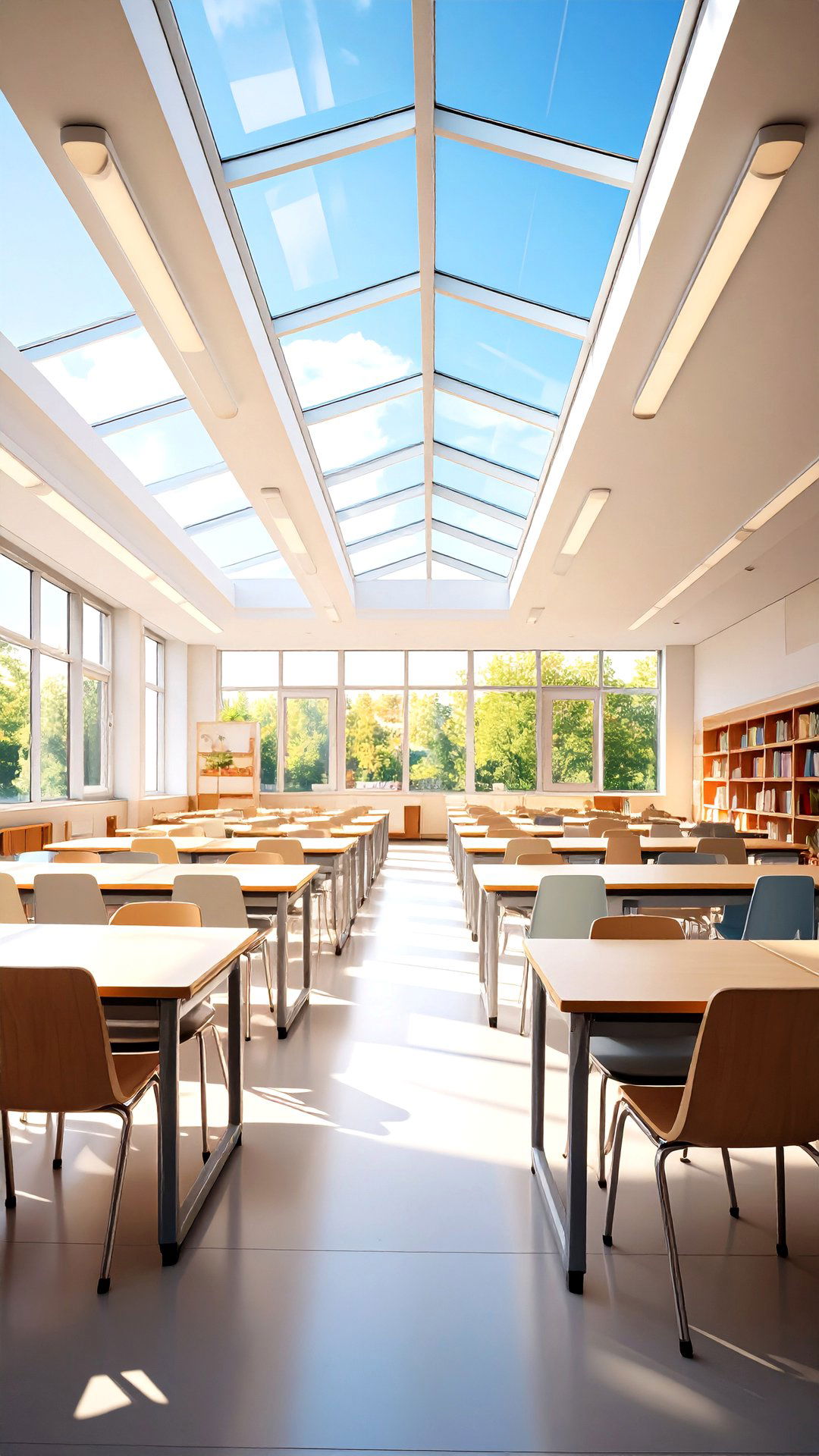
Where budgets allow, tubular daylight devices (TDDs) bring sun from rooftop to desk with minimal heat gain. Case studies cited by PBK show 30 percent electric-light reduction in window-poor interior rooms after installing two 14-inch tubes. Pair the skylight with photocell dimming so LEDs fade gracefully as clouds pass, preventing “light seesaw” that distracts students.
19. Reflective Ceiling Panel Classroom Lighting Distribution
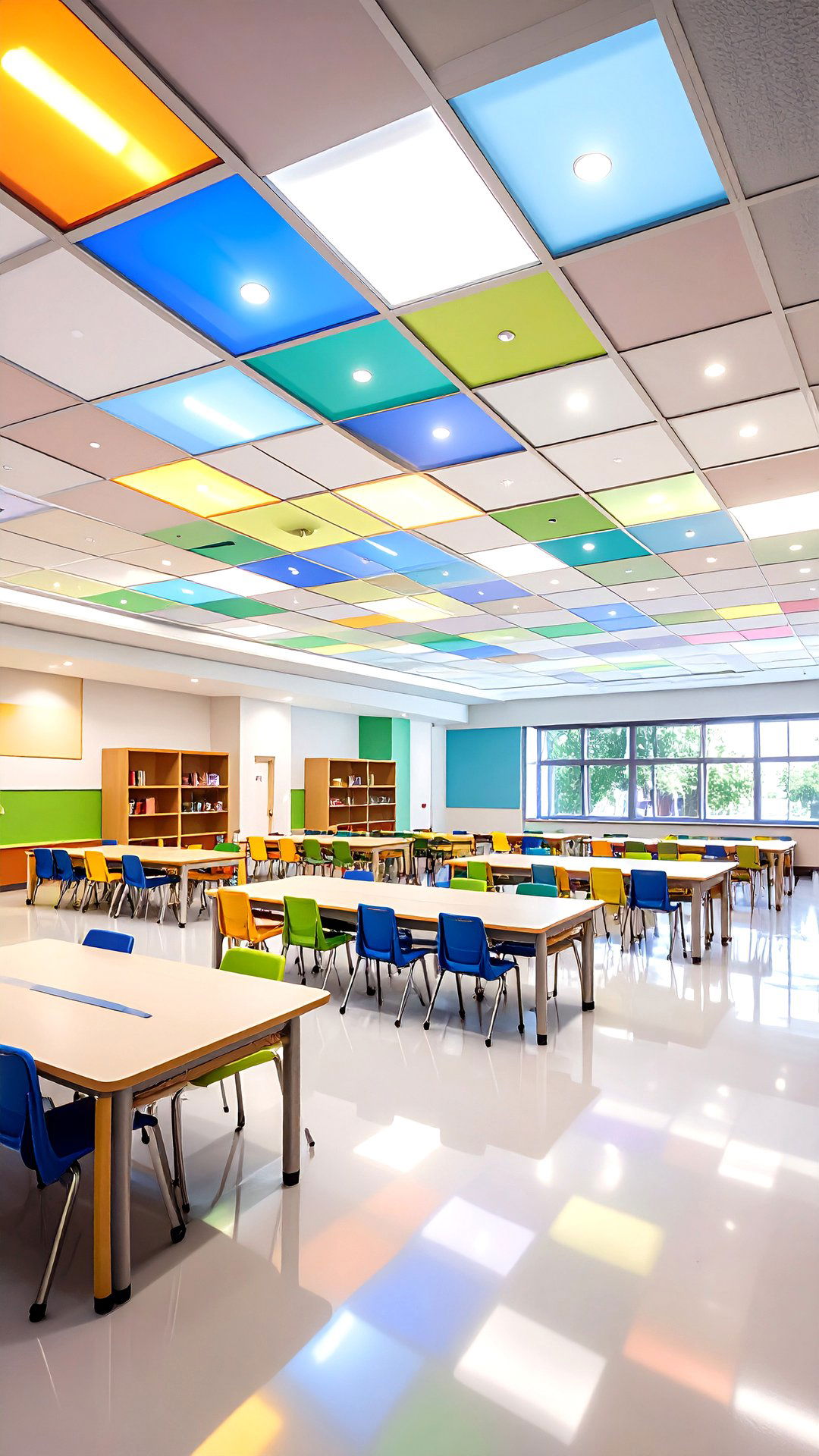
Raised, prismatic ceiling tiles or reflective baffles scatter uplight across desks, cutting shadow pockets along walls. RevolveLED notes that retrofitting ceiling panels often costs less than swapping every troffer and instantly boosts vertical illuminance critical for reading posters. Choose moisture-resistant panels so science labs don’t warp them after experiments.
20. Blended Natural-and-Artificial Classroom Lighting Schedule
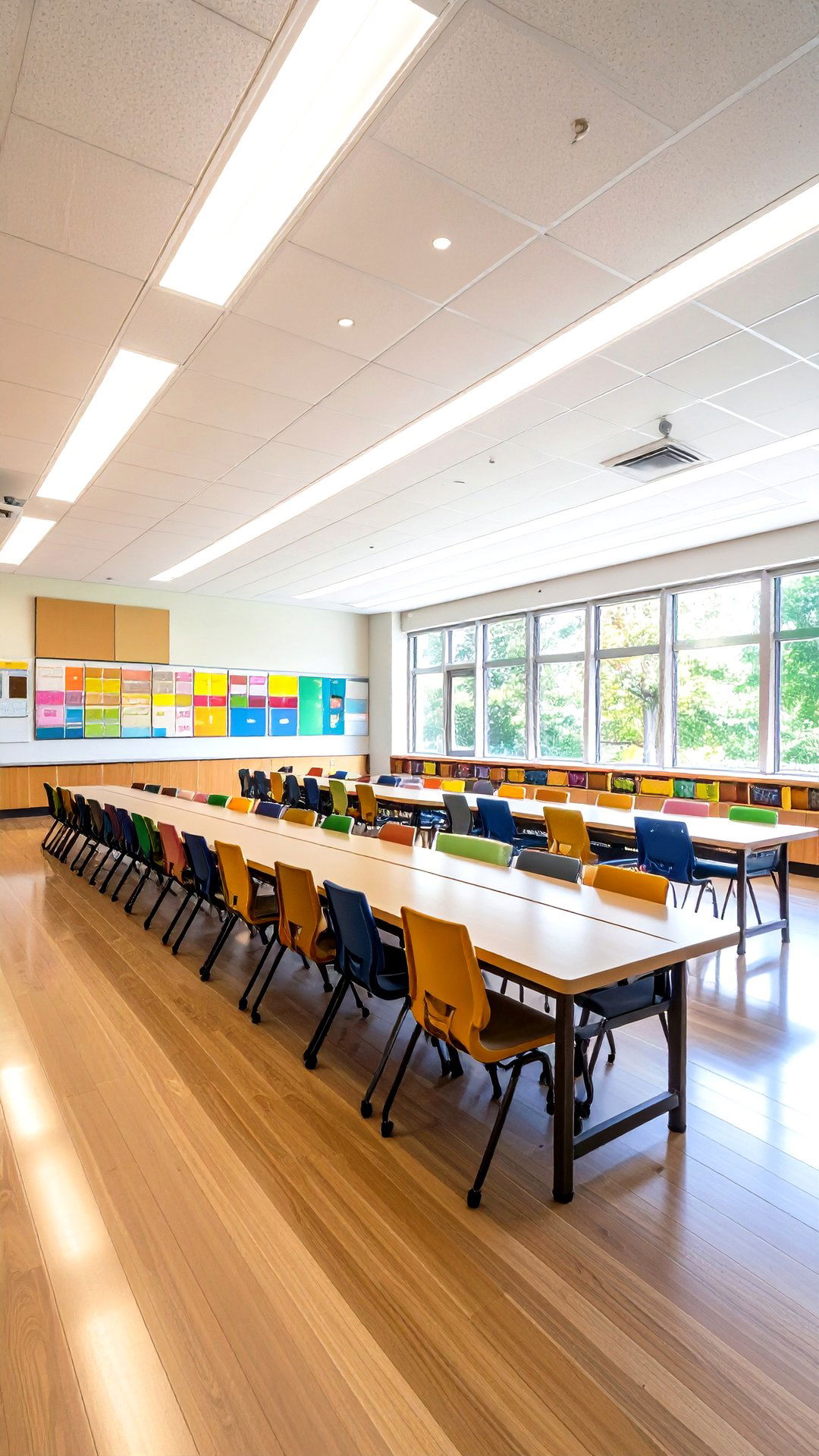
Coordinating blinds, tunable LEDs, and daylight sensors produces a smooth 24-hour light curve that respects circadian biology. Teachers can schedule cool 5000 K light until lunch, then ramp down to 3500 K as attention naturally wanes. DOE field data show fewer afternoon yawns in such classrooms. Train student helpers to watch sensor readouts, turning lighting management into a real-time science lesson.
21. Wireless Dimmer Switch Classroom Lighting Inclusion
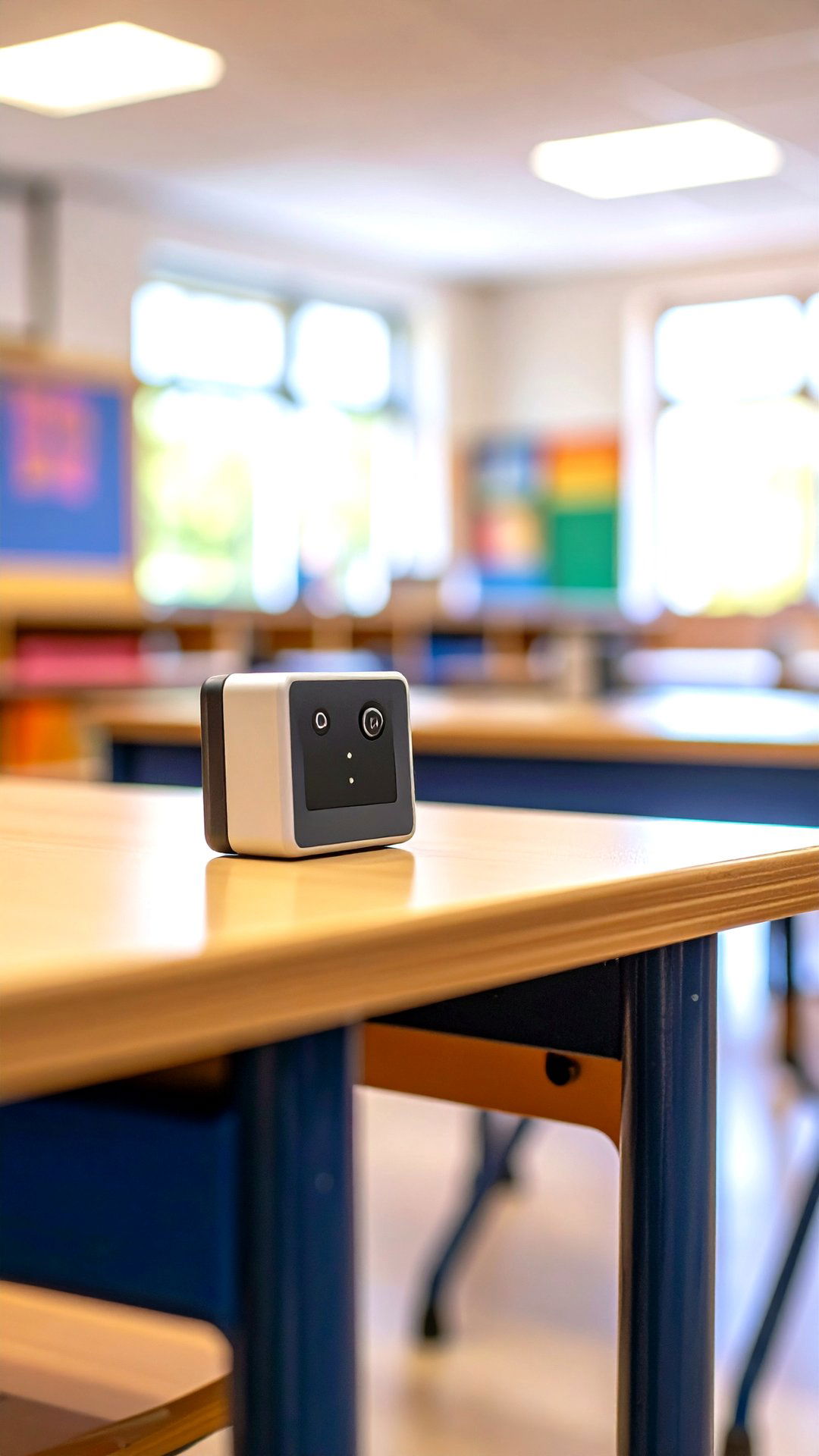
Autistic and light-sensitive students often need immediate control over brightness. A palm-sized, battery-free wireless dimmer stuck onto a desk lets them lower overheads without stopping the class. The Stimpunks Foundation calls this “one of the simplest inclusive tools a teacher can deploy. ” Because switches harvest kinetic energy, there are no batteries to maintain, and they can be re-paired to new fixtures if the room layout changes.
22. Bluetooth-Mesh Classroom Lighting for Future-Proofing
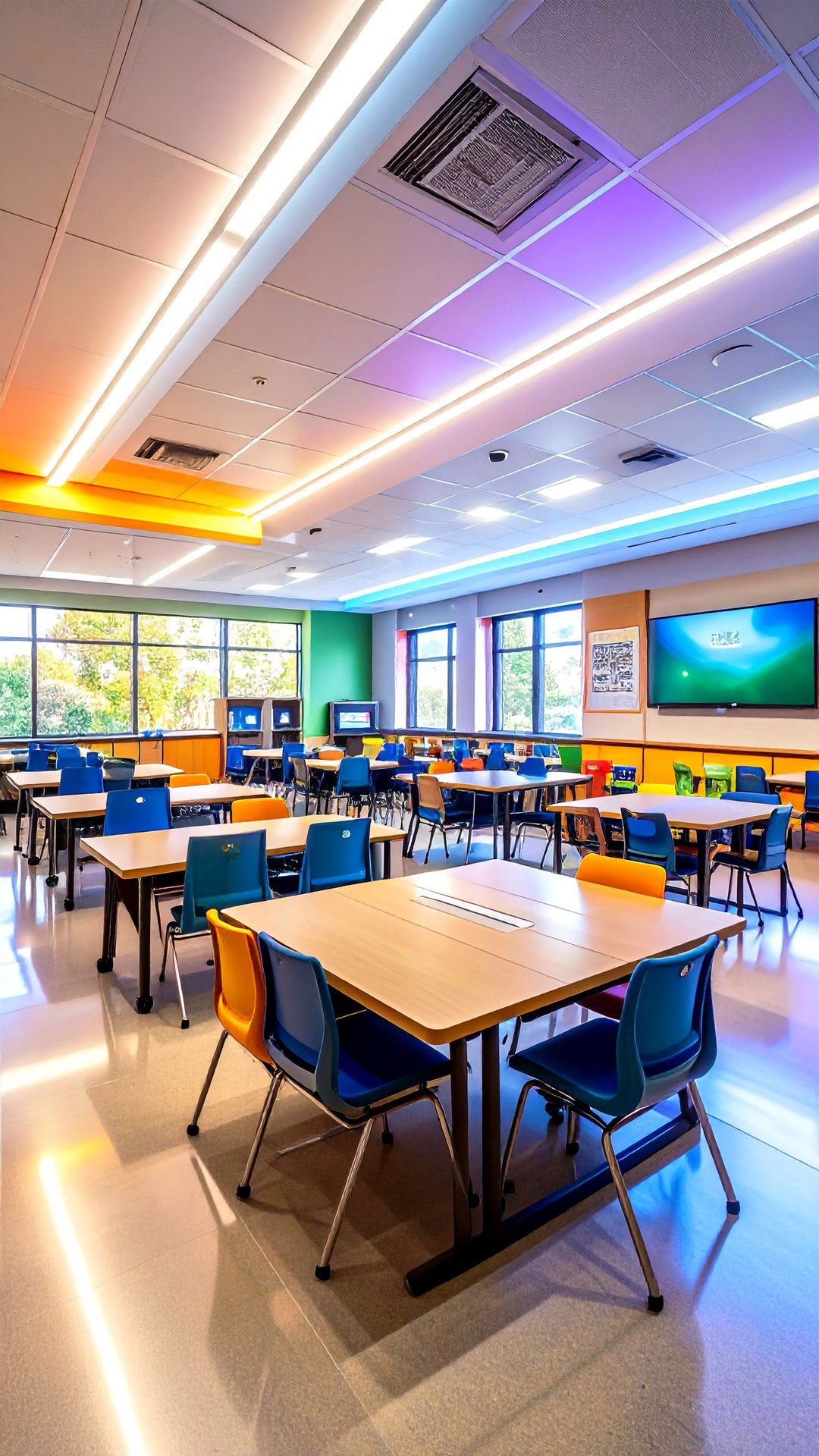
Bluetooth-mesh luminaires communicate directly, so adding sensors or remotes later is as easy as scanning a QR code. A 2023 Bluetooth SIG report highlights schools that layered CO₂ sensors onto the same mesh to trigger both lighting and ventilation boosts. Mesh networks self-heal if one node fails, maintaining consistent classroom lighting without IT intervention and reducing downtime during exams.
23. Low-Blue-Light Classroom Lighting Settings for Screen Days
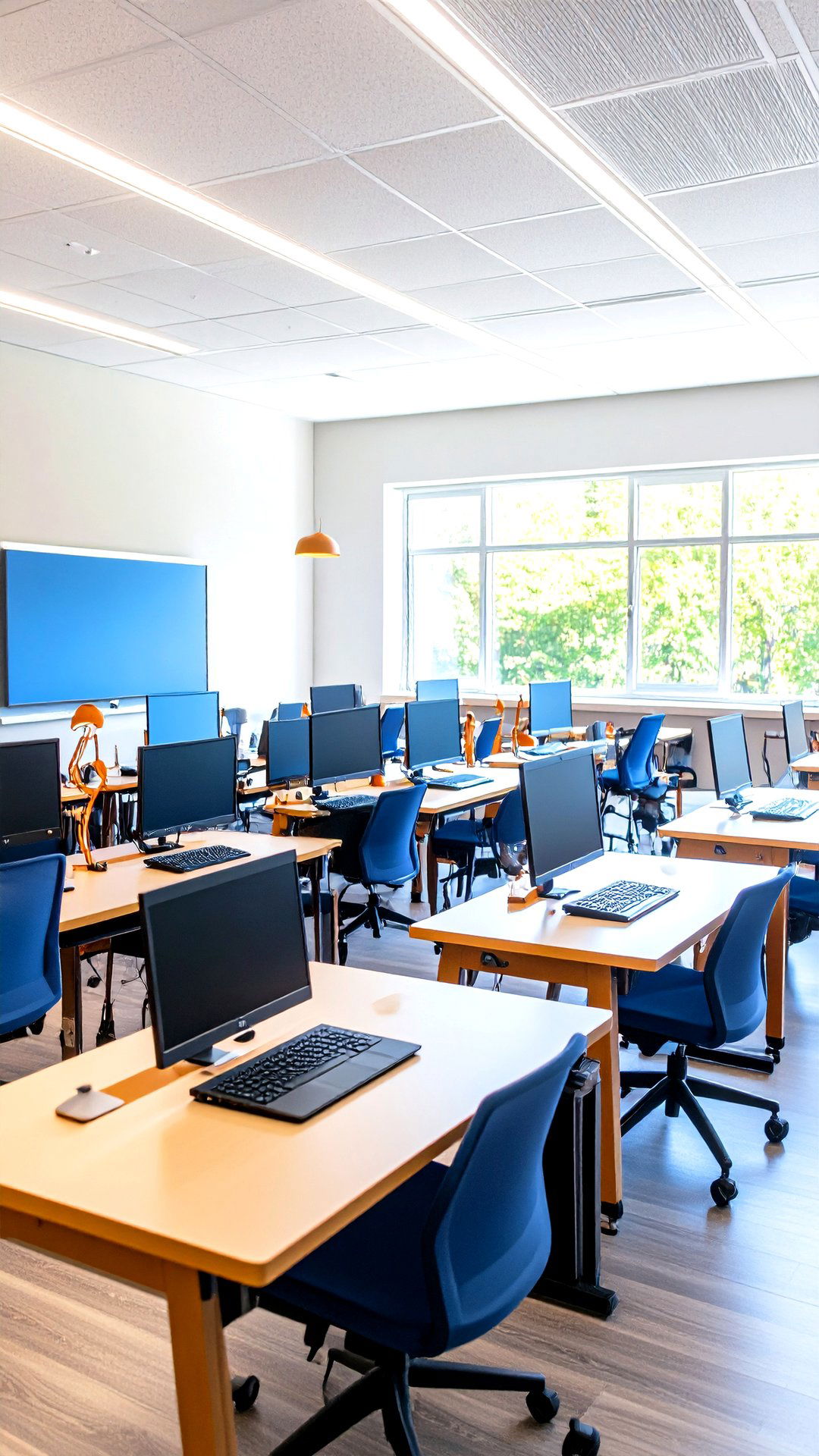
Prolonged device use exposes students to high blue spectra that can disrupt sleep and strain eyes. Pediatric optometrists suggest switching LEDs to 3000 K and enabling Night-Light on PCs during heavy digital lessons. Combine that with amber task lamps near monitors so the overall scene stays bright enough to prevent contrast fatigue. Posting a blue-light-reduction checklist near the projector reminds classes to safeguard vision whenever screens dominate.
24. Teacher-Desk Task Classroom Lighting Enhancement
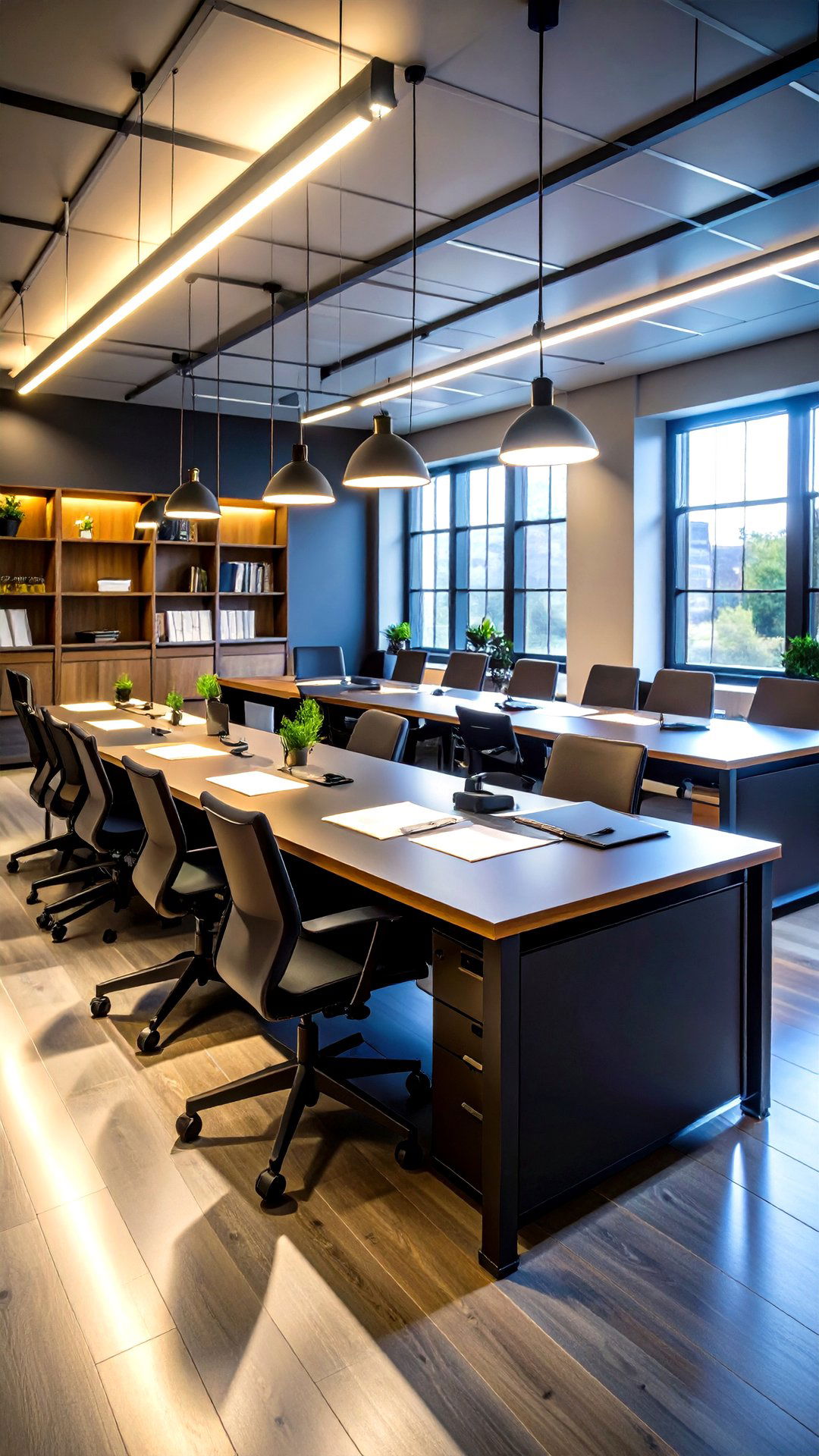
A focused lamp over the teacher’s desk prevents the common habit of blasting ceiling lights just to grade papers. The Spruce’s task-lighting guide recommends adjustable swing-arms so glare never hits students. Use 4000 K bulbs for accurate color-coding of worksheets, and install a motion sensor on the lamp’s base so it clicks off automatically during group rotations, trimming wasted watts.
25. LED Retrofit Classroom Lighting for Quick Upgrades
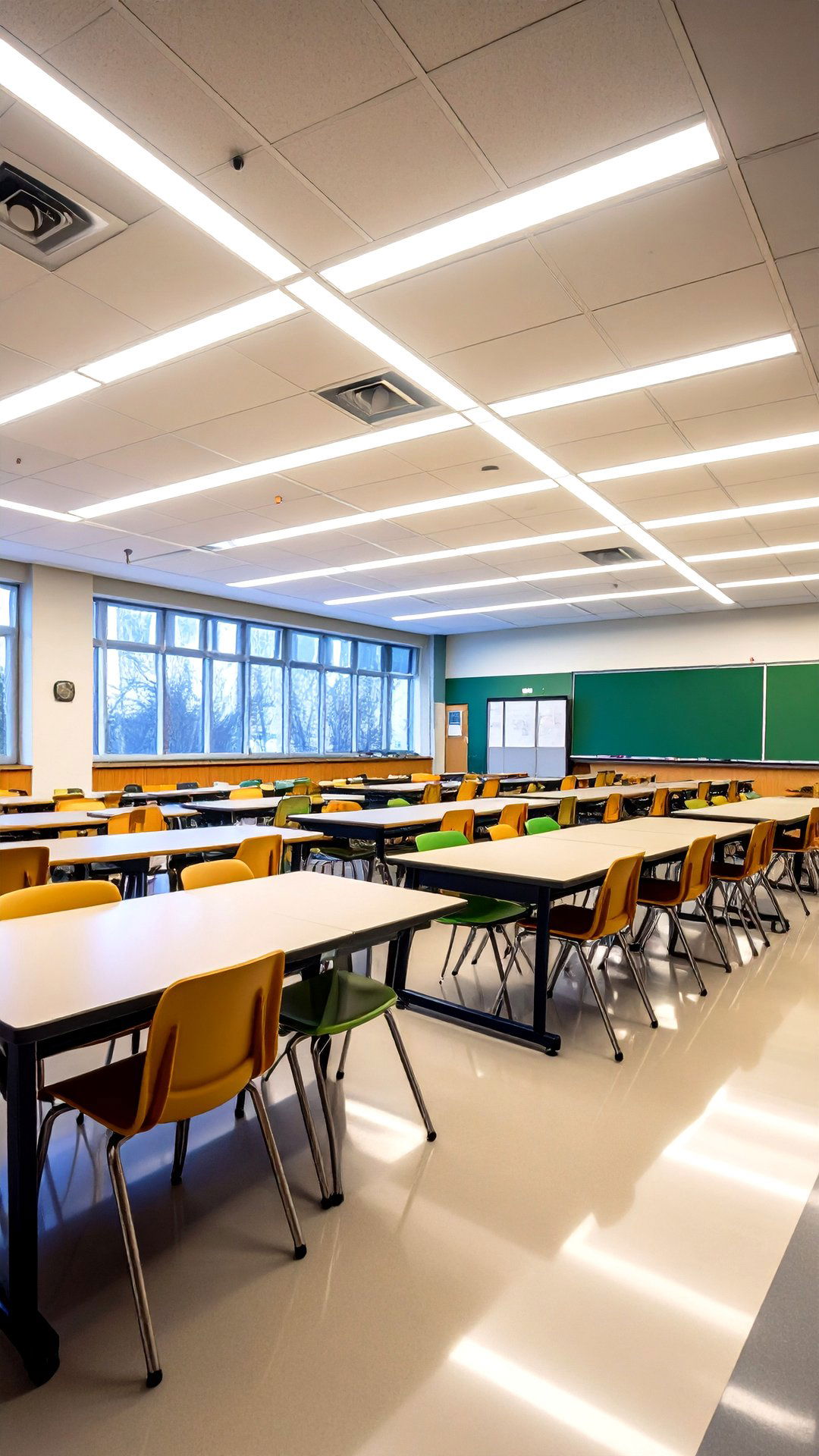
When budgets or leases rule out new fixtures, LED tube retrofits slide into existing fluorescent housings and cut consumption by roughly 50 percent, according to EarthTronics’ 2025 school guide. Choose ballast-bypass models to avoid future ballast failures and meet most districts’ flicker-free requirements. Label the retrofit date on the fixture with a paint pen so future staff know lamp age, keeping classroom lighting maintenance transparent long after today’s innovators retire.
Conclusion:
Thoughtful classroom lighting balances health, engagement, and stewardship. Daylight and reflective surfaces brighten minds for free, tunable and dimmable LEDs align spectral cues with lesson flow, and smart sensors guarantee neither lumens nor dollars are wasted. Whether you start by adding a simple clip-on lamp or leap to Bluetooth-mesh controls, every idea above moves the room closer to an environment where students feel energized, focused, and safe — proof that the right light truly sparks learning.



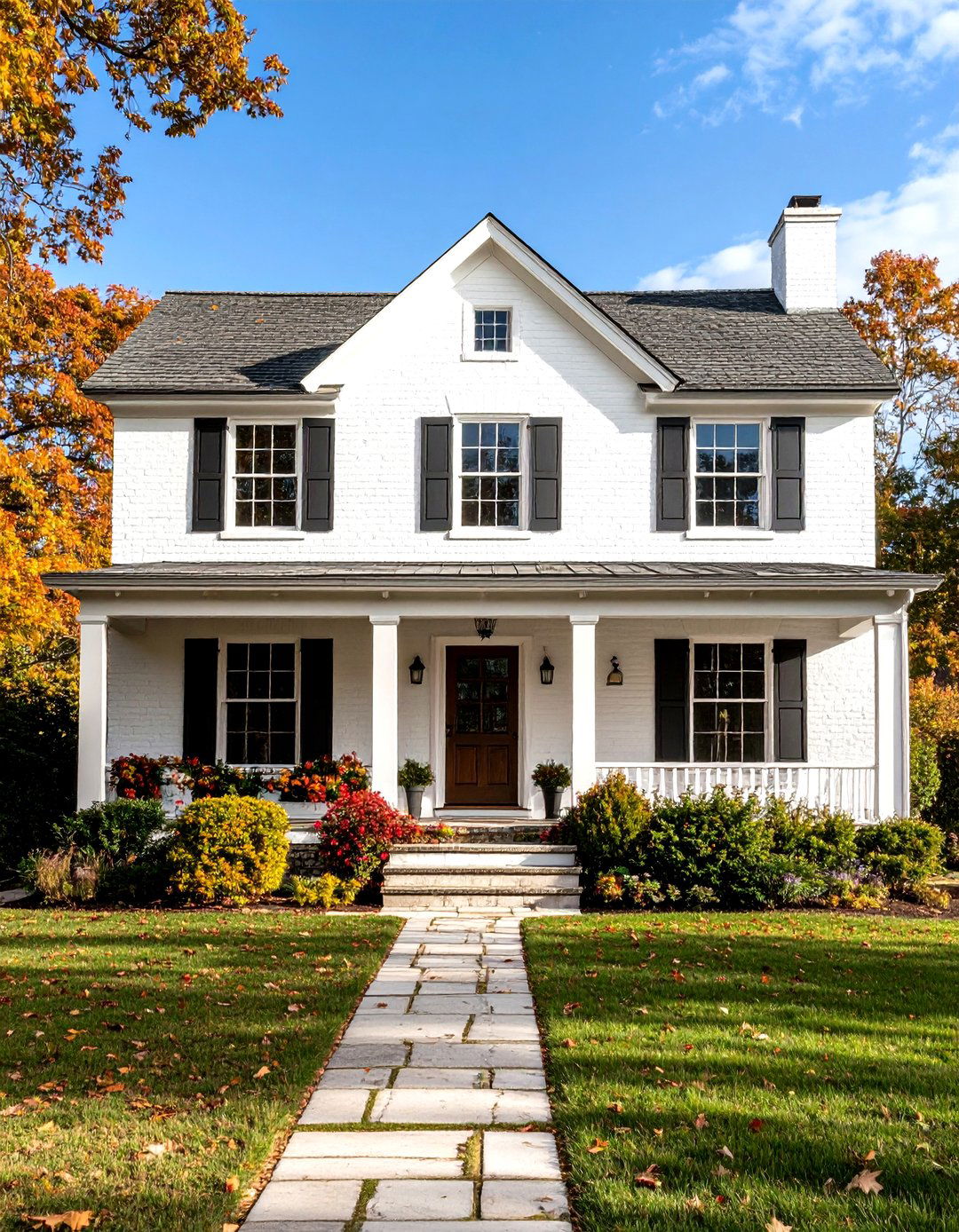
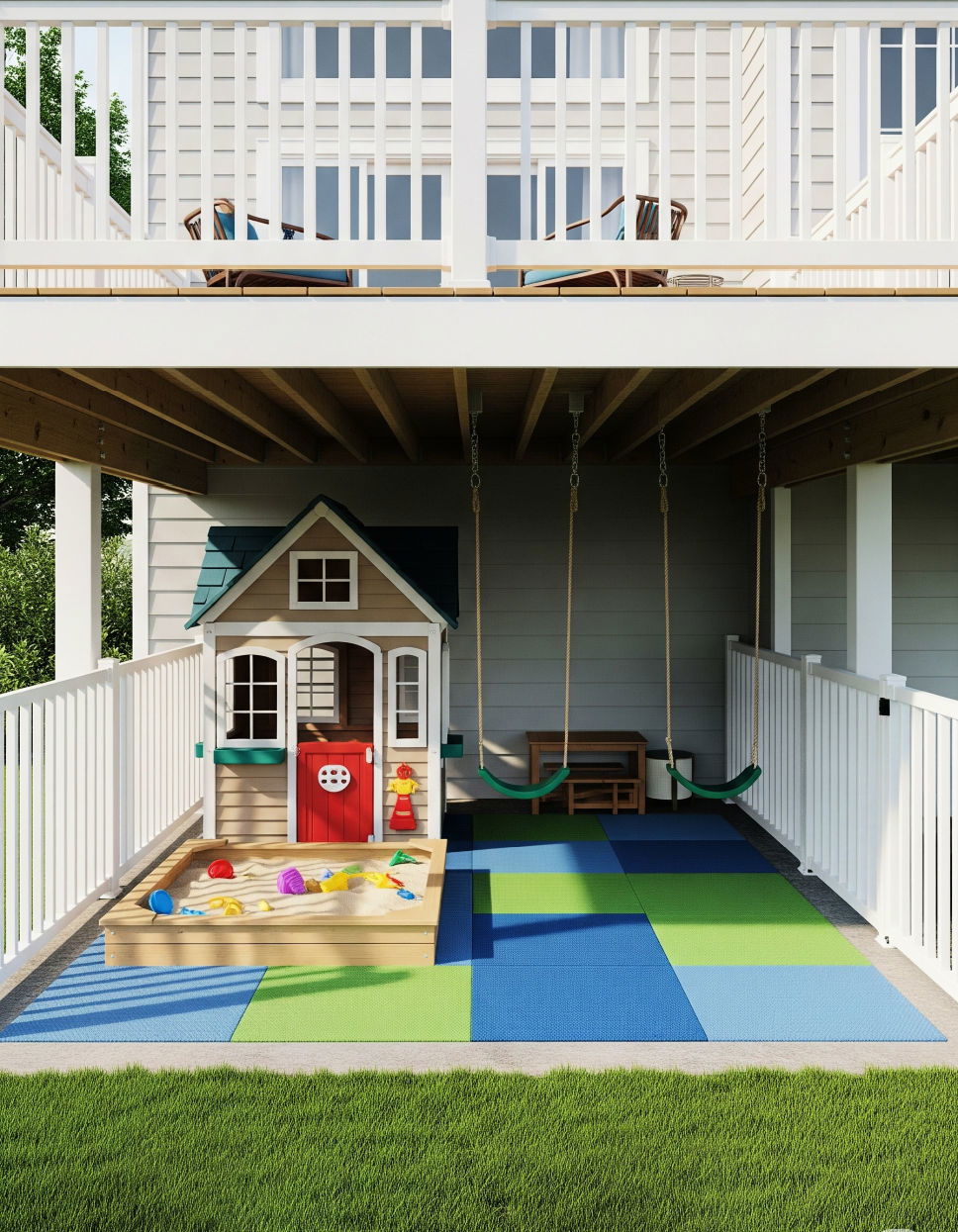
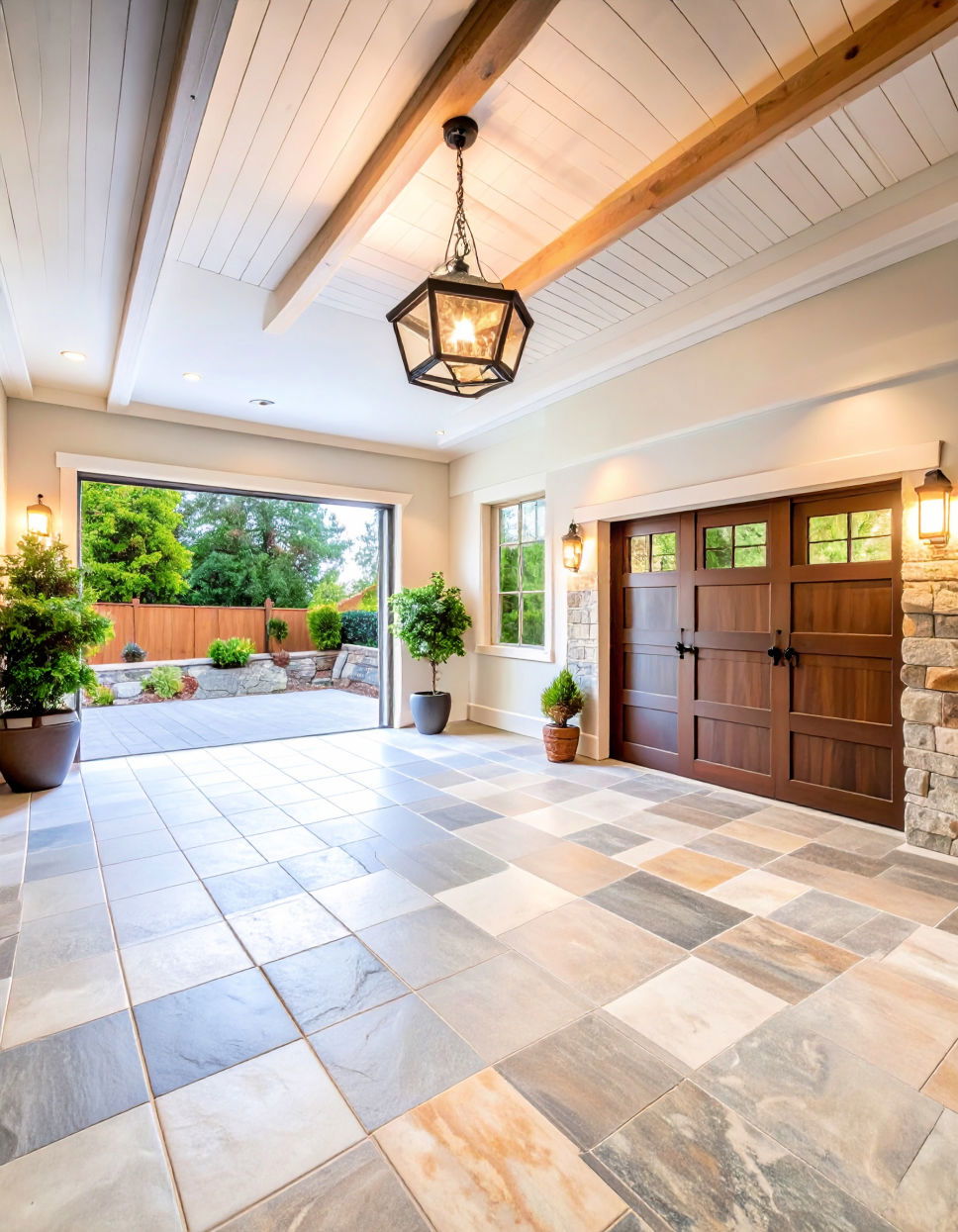
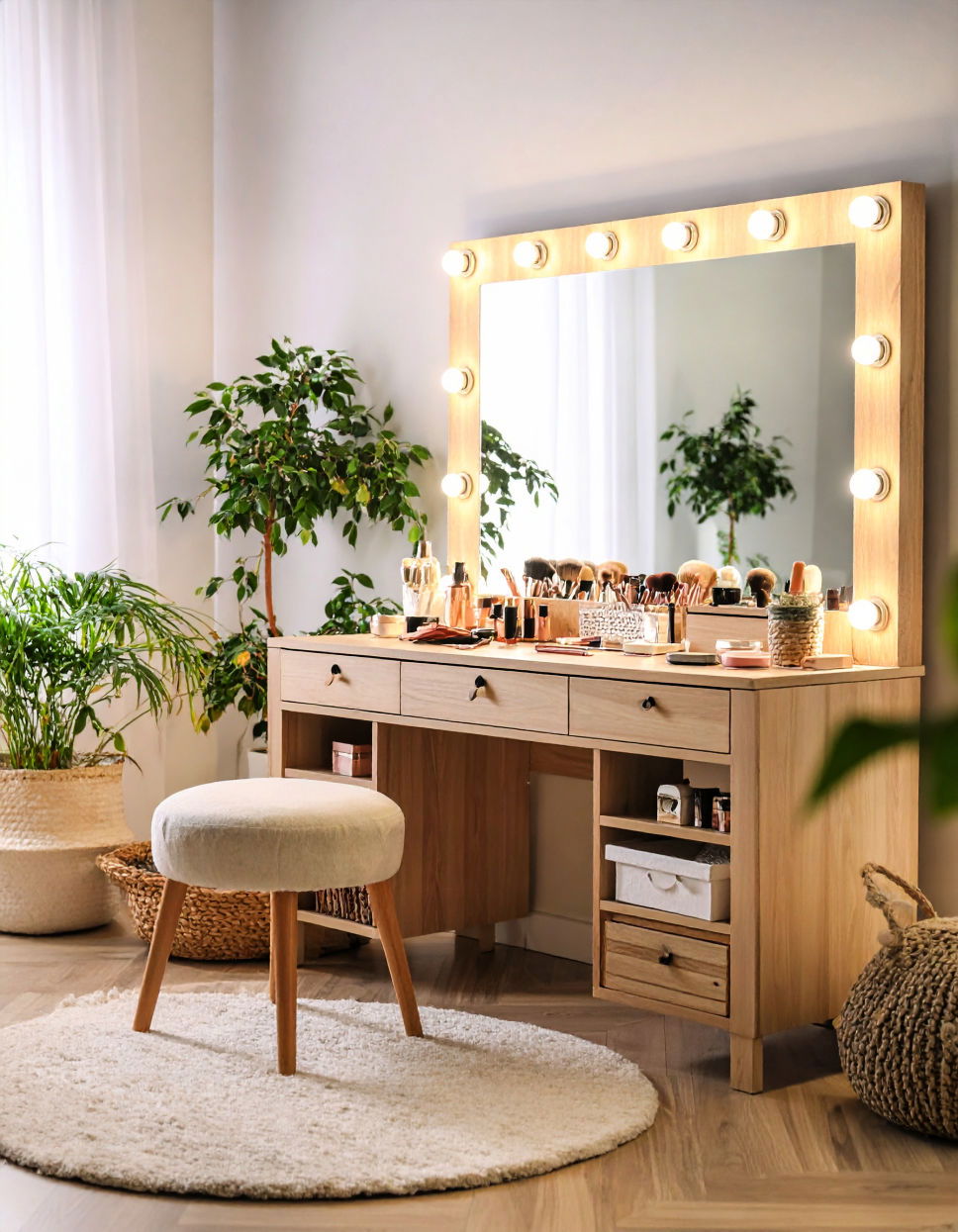
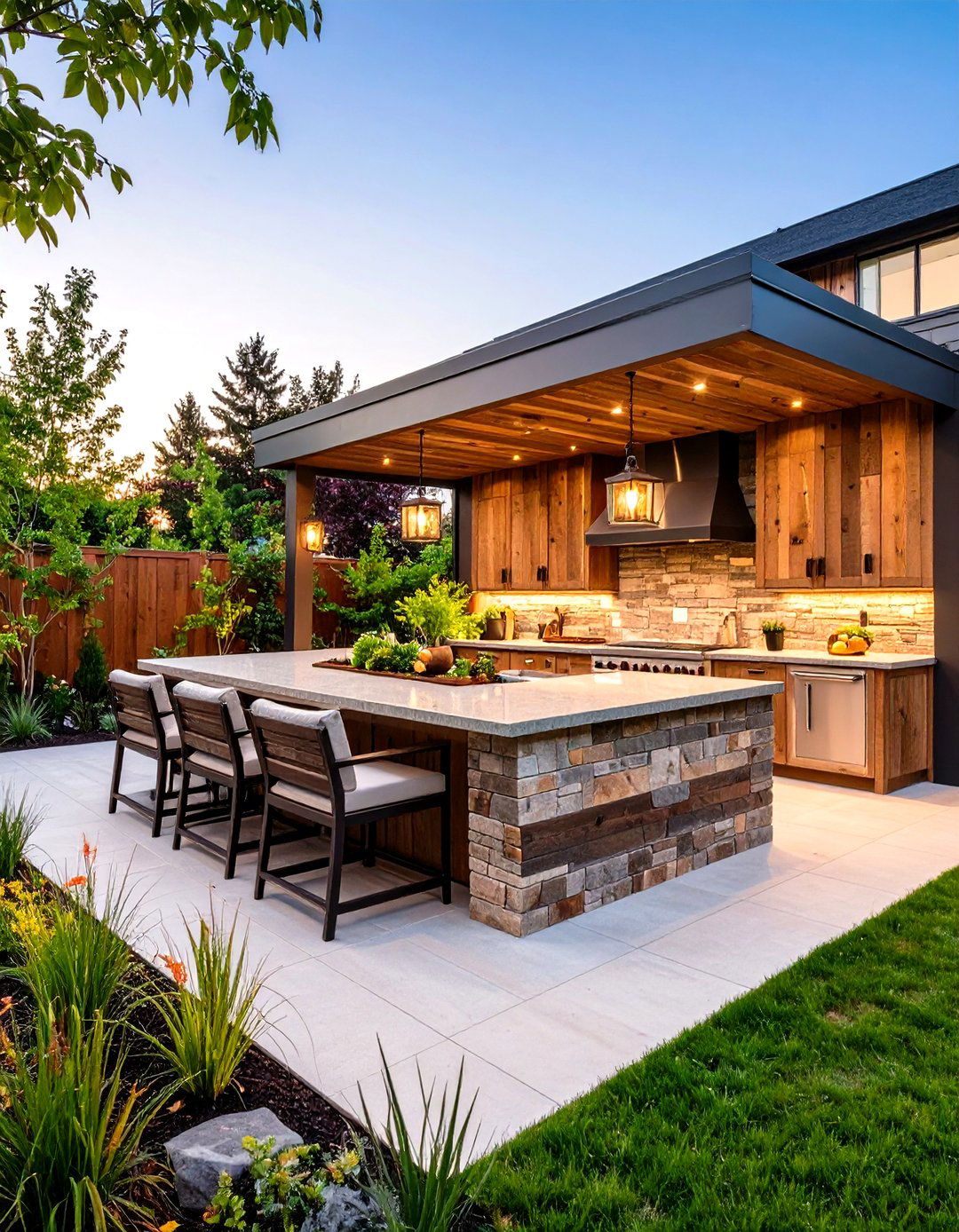
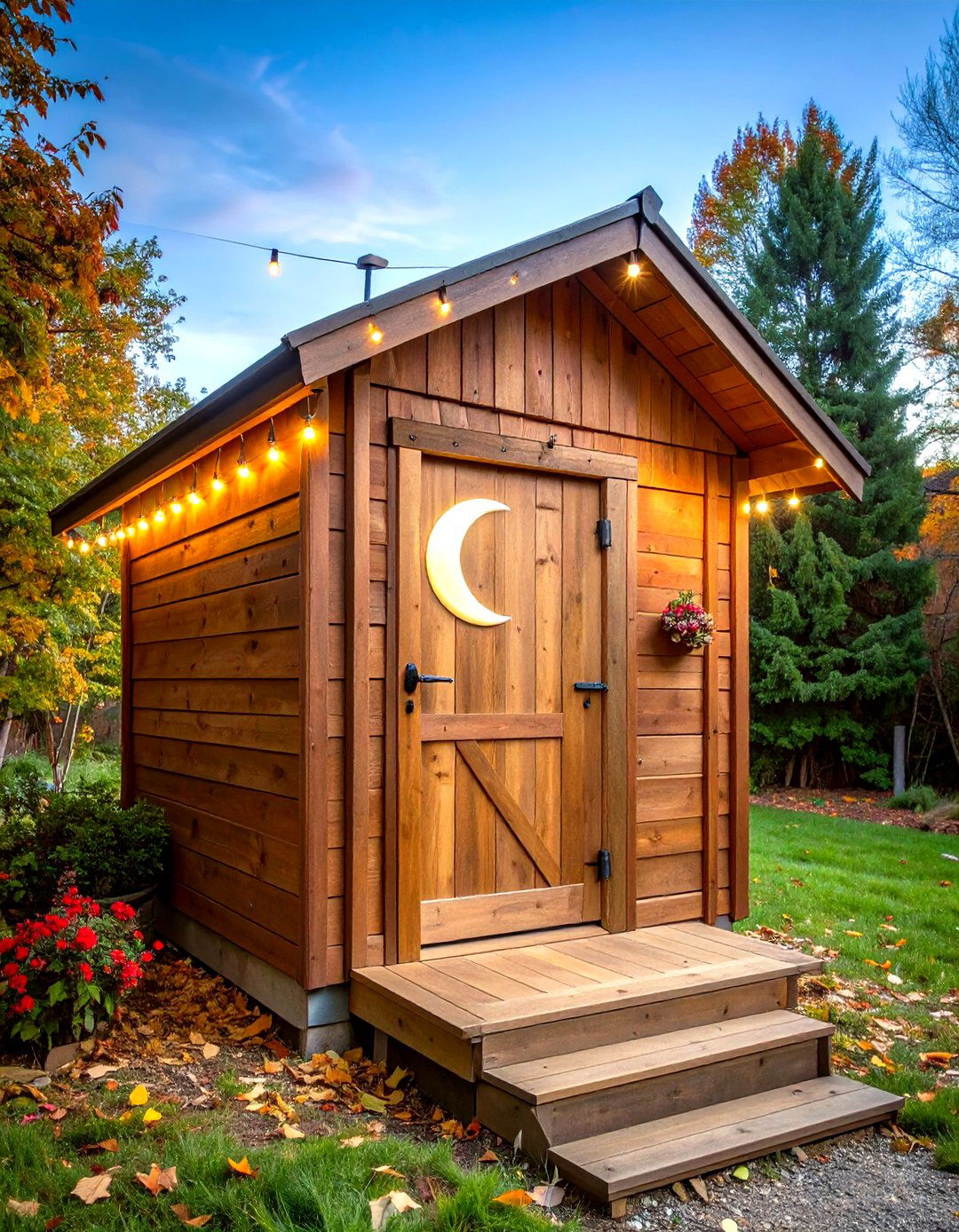
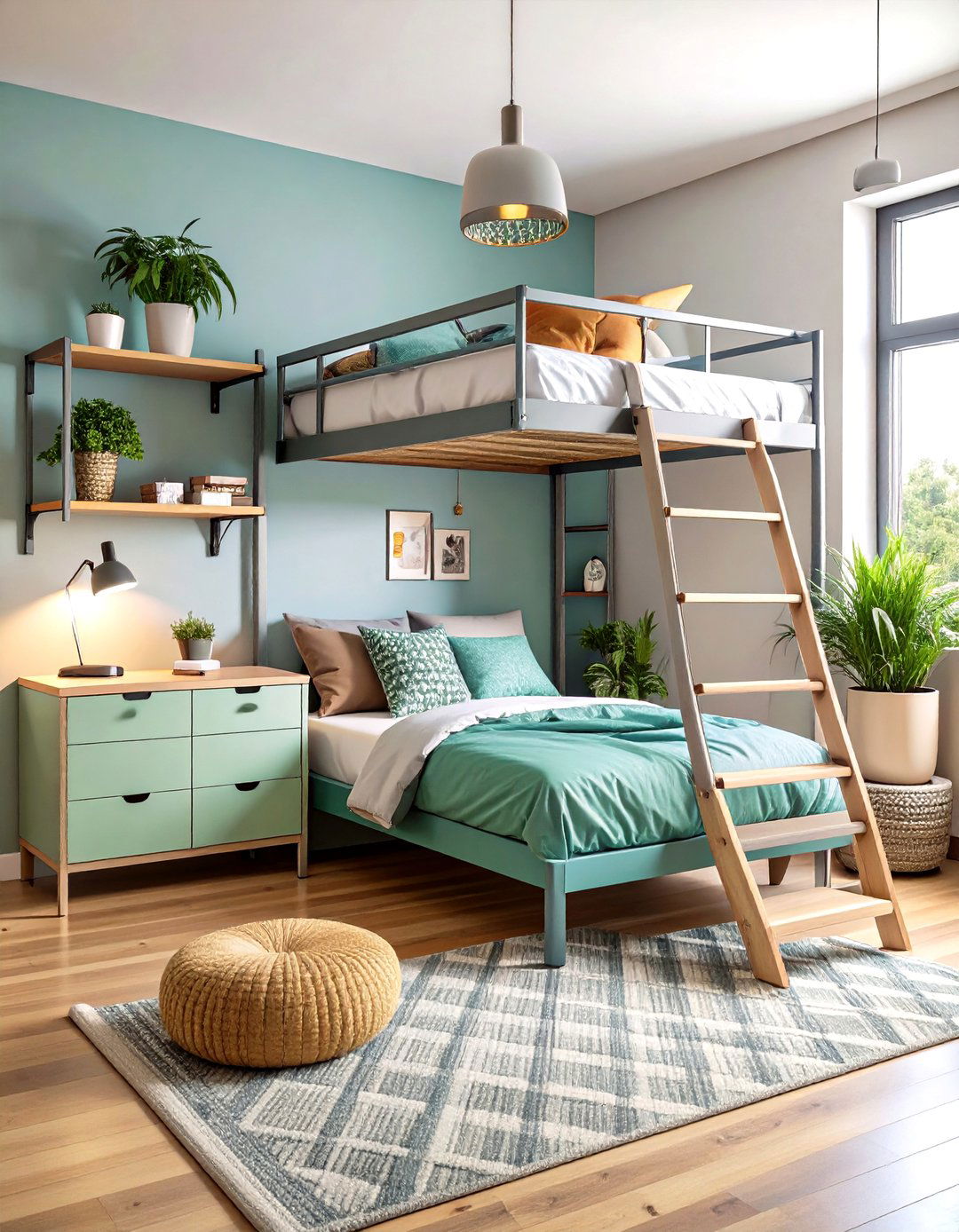

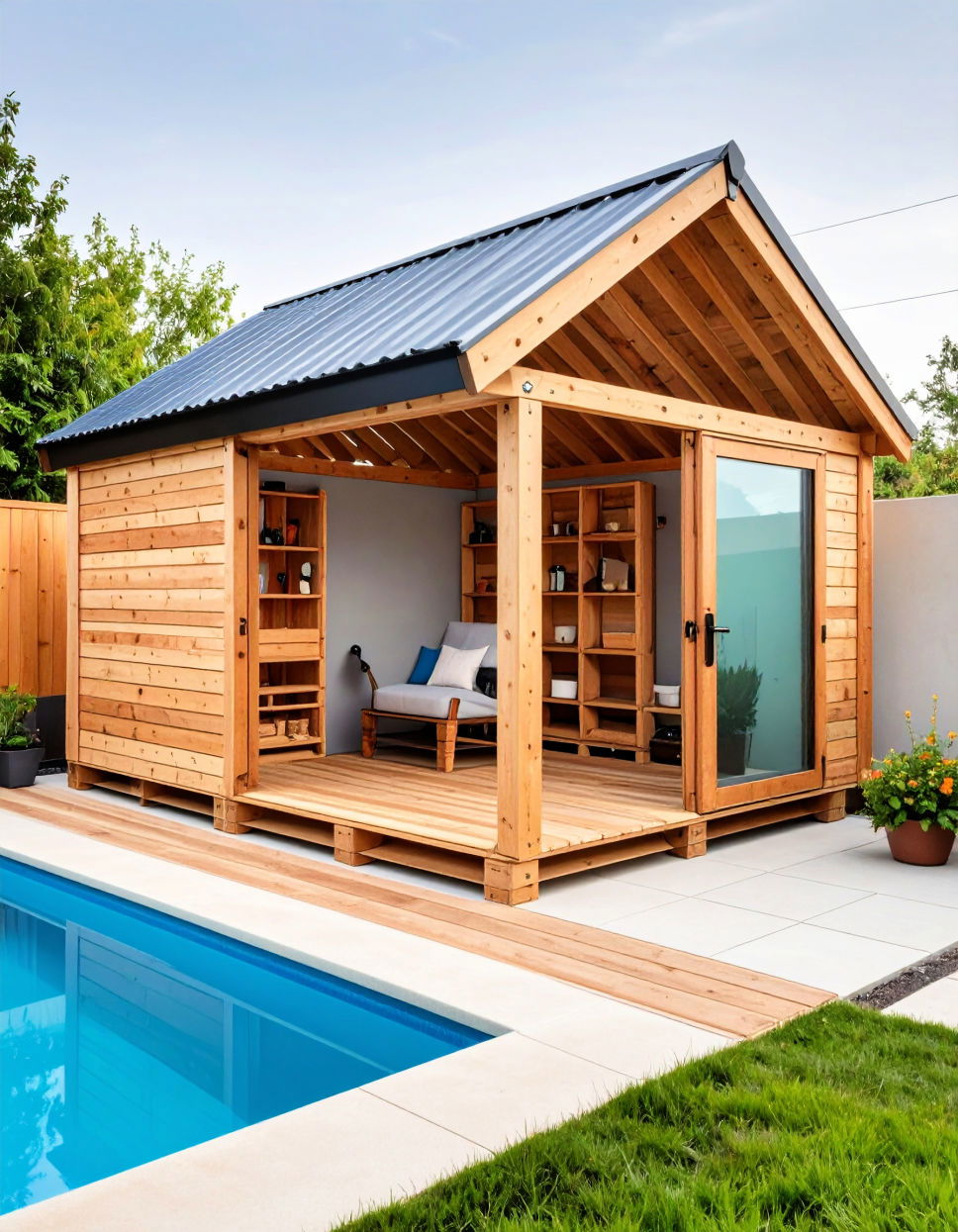



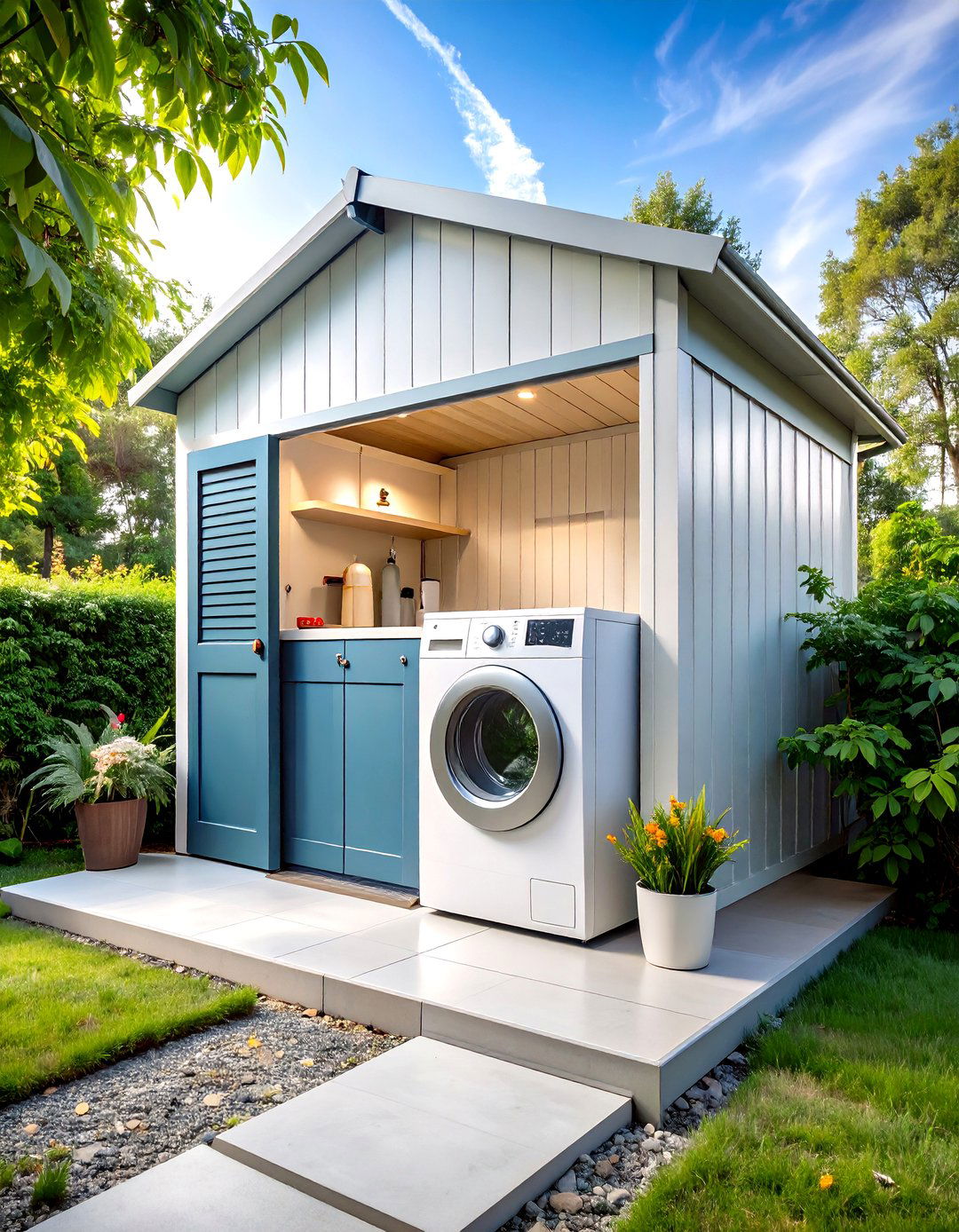

Leave a Reply